

What to Do When a Well Pump Keeps Tripping Breaker?
Well pump is a lifesaver for some families. Most rural families use an alternative source of water supply to fulfill their water demands. Although a well pump is a great alternative, an issue with the machine can make your life miserable.
Among the problems, tripping is one of the most common and, at the same time, irritating problems. Don’t be surprised when you see the well pump keeps tripping breaker all of a sudden. It’s a normal situation when something like overload, pressure switch problem, breaker problem, etc. happens.
This article will cover everything regarding the issue. Don’t worry. Stay till the end.
- 1.1 1. Overloading The Circuit
- 1.2 2. Fault In The Wiring
- 1.3 3. Weak Breaker
- 1.4 4. Well Pump Motor Defect
- 1.5 5. Clogged Impeller
- 1.6 6. Bad Seals
- 1.7 7. Pressure Switch
- 2 Video of Well Pump Tripping Breaker
- 3.1 Inspect The Pressure Switch
- 3.2 Disconnect The Motor
- 3.3 Inspect The Pump Motor
- 3.4 Fix The Blockages
- 3.5 Check The Pipes, Pump Boxes, Bearings, And Shafts
- 4 Tips To Follow While Working With The Well Pump Tripping Breaker Issue
- 5.1 How can you tell if your well pump is bad?
- 5.2 Can a well pressure switch cause breaker to trip?
- 5.3 What causes the pump to trip?
- 6 Conclusion
Why Does A Well Pump Keeps Tripping Breaker?
The situation can be frustrating when a well pump or submersible water pump keeps tripping the breaker. Before replacing the well pump, it’s always better to find out the reasons behind the issue.
These are the 7 most common reasons for a well pump to keep tripping its breaker –
1. Overloading The Circuit
One of the main reasons for the breaker tripping issue is overloading. Overload normally means more power input than the device can handle.
When the circuit is overloaded, the circuit breaker may start to act weirdly. In such circumstances, tripping is a common outcome.
Solution: When the overloading issue happens, you have to do something to make it go away. Removing the clogs in the circuit is the way to get the job done here.
2. Fault In The Wiring
Another reason for the tripping problem is faulty wiring. The wires may be short or damaged. In such cases, you may find the tripping issue as an outcome of the wiring fault.
There may be a loose connection in the electrical box too. You may find a similar outcome in this situation also.
Solution: Check the entire wiring of the well pump. If you don’t think you will be able to inspect, hire a professional. After that, fix the damage to the wiring.
3. Weak Breaker
The breaker may also trip when the breaker itself is faulty. It’s a common instance that appliances get older and lose their temperament. If that’s the case, the breaker won’t be able to perform its function as it’s supposed to.
Solution: When the breaker itself is weak or faulty, you won’t have any option but to replace the breaker. Try buying a premium breaker. Otherwise, you may face issues again with it.
4. Well Pump Motor Defect
Don’t be surprised. A well pump may keep tripping when there’s a defect in the well pump motor. Sometimes the well pump performs poorly due to a problem with the pump’s motor.
So, the pump tripping problem isn’t impossible to fix when there’s a problem with the motor. That’s why checking the pump motor is another crucial step to finding the root of the tripping problem.
Solution: Replacing or changing the pump motor is the only option here. Similar to the breaker, try to get a good-quality pump motor as a replacement.
5. Clogged Impeller
Sometimes the impeller may get clogged. As the impeller is a major component of a well pump, the clogging of it’s a big concern. You may face problems like continuous breaker tripping until the clog is fixed.
Solution: Try to remove all the clogs within the impeller. To do that, you have to take the cover or seal of the casing first. Then, you will see the impeller. Remove it from the machine and then clean the impeller properly.
6. Bad Seals
The seals of the well pump may also be why your well pump keeps tripping its breaker.
When the breaker is in a position where the mechanical seal has failed, you may face the tripping issue. Things like this become common since a failed seal allows water to enter the pump parts.
Solution: When the seal problem is the main issue, you will have to work with the seal. Try changing the seal or fixing the leak in the seal.
7. Pressure Switch
Sometimes you may think, will a bad pressure switch trip the breaker ? Yes, a bad pressure switch may also be the reason for a well pump to trip its breaker.
A pressure switch can become weak or bad due to the burnt or bad contacts on the pressure switch. If that happens, it can lead to a situation like tripping the breaker.
Solution: When there is an issue with the pressure switch, try replacing the bad contacts. They are the main culprit in this situation.
- How to reset the well pump pressure switch without a lever?
- Can you burn out a well pump?
- Well pump is running but not building pressure.
Video of Well Pump Tripping Breaker
To get a more simplified visualization of the reasons for the issue, check out this video.
How To Diagnose The Well Pump When It Keeps Tripping Breaker
Sometimes you may find a new well pump tripping breaker . Old or new, it is important to get to the root of the issue. Besides inspecting the individual symptoms or studying the reasons, a thorough diagnosis of the well pump is also a useful way to get rid of the issue. Follow the next steps to get the job done smoothly.
Inspect The Pressure Switch
The first step in diagnosing the well pump will be to inspect the pump’s pressure switch. Since a bad pressure switch is one of the main reasons that cause the breaker to trip, it’s important to see whether it is okay or not. If you find the pressure switch is faulty, replace it as soon as possible.
Disconnect The Motor
After you are done with the pressure switch, it’s time to work with the pump motor. Sometimes, issues with the pump motor can lead to face problems with the well pump. That’s why you have to disconnect the motor from the pump so that you can surely know what the culprit is.
To disconnect the motor from the pump, turn off the power source first. Then, remove the bolts or turn the clamp to disconnect the motor.
Inspect The Pump Motor
When splitting off the pump motor from the pump is over, you have to inspect the motor to know if it’s okay. You have to measure the motor’s resistance to know the answer.
To do this, taking the help of a digital multimeter is a must. When the reading of the multimeter is below 1 Ohm, the pump motor is not good. You have to replace it.
Fix The Blockages
Fixing the blockages is the next step when you are done with the motor. You have to free the pump from any sort of blockage so that there is no overload issue. Checking the box baskets and pipes of the pump is an important step to clear off the blockages.
Check The Pipes, Pump Boxes, Bearings, And Shafts
When the mentioned four steps are done, you can also check the pipes, the pump box, bearings, and the shafts to see if they’re okay.
Checking these parts is also important as any fault within them may lead to the tripping of the breaker.
Tips To Follow While Working With The Well Pump Tripping Breaker Issue
In most cases, working with the well pump may seem difficult as most of the people doing DIY are not experts. the following tips may help you more-
- Diagnose the well pump thoroughly. You may try to skip one or two parts of the diagnosis if you see them as not important. Do not do that. Even faults within the minor parts of a well pump may lead to a major problem.
- Use a premium pump motor as a replacement. Going for some cheap alternatives is tempting. But if you go for it, you may face a lot of issues with your pump in the future.
- Don’t go for cheap alternatives while replacing bearings or shafts. Just like the motor, cheap bearings or shafts may also cause problems in the future.
- Wear protective gear to ensure the best safety. For instance, use rubber gloves while inspecting the motor of the pump with a multimeter.
- Don’t hesitate to hire a professional when you are out of moves. It’s very much possible to become clueless while working with a well pump. Don’t try to experiment with something. Hire an expert right away.
- Well pump overheats and shuts off?
- Pros and cons of constant pressure well pumps
- Can you use a pool pump for a well pump?
How can you tell if your well pump is bad?
There are a lot of symptoms to give the verdict that your well pump is bad. If you find the symptoms like –
- Muddy or murky water coming out from the tap,
- The tap sputtering water,
- The taste of the water is way off than usual, or
- Loud noises coming out from the pump,
They all indicate the pump has gone bad.
Can a well pressure switch cause breaker to trip?
A well-pressure switch can also cause the breaker to trip. It happens especially when the pressure switch becomes weak or bad to perform properly.
What causes the pump to trip?
The reasons for a pump to trip are a lot. Among them, the main causes are overloading, motor defects, bad circuit breakers, clogged impellers, bad seals, and bad pressure switches.
The issue we’ve tried to cover here is an irritating and frustrating one. It’s never a pleasing scene to see your well pump keeps tripping breaker.
However, don’t go for the prompt replacement of the pump without diagnosing. Finding the root of the problem will help a lot to solve the problem efficiently and with much less money.
As an Amazon Associate, I earn from qualifying purchases.
Professional Plumber and Blogger
James is passionate about plumbing and is also a Professional Plumbing Course Tutor. He has experience of over 15+ years of as a plumber in San Diego, California. He completed many plumbing projects in commercial and residential areas. James cooperated and shared his on-field plumbing experience with the writing team to make the guides helpful.
Similar Posts

Harbor Freight Shallow Well Pump Problems: How to Fix?
Sooner or later, your shallow well pump is bound to present you with some defects, even if it’s from a renowned brand like Harbor Freight. The most common Harbor Freight Shallow well pump problems include pulsing water, murky or smelly water, or sometimes, no water at all! Inflated utility bills are also a matter of…
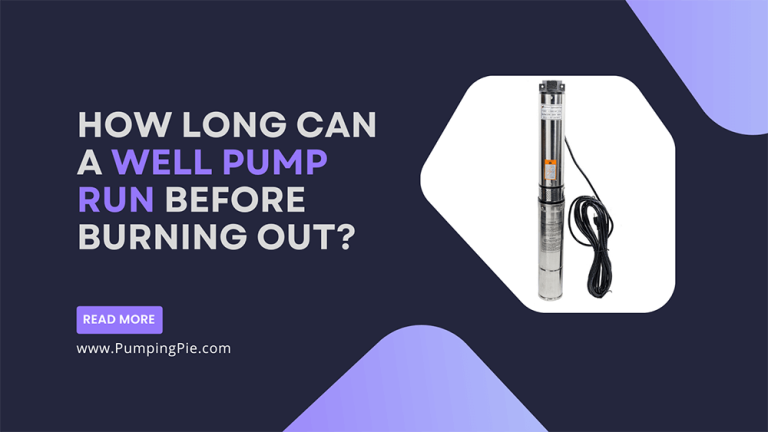
How Long Can A Well Pump Run Before Burning Out?
If you have a well pump system in your house, you’ve stressed at one point about how long a well pump can run before burning out. A top-quality well pump can run for almost 24 hours without any interruptions. Average-quality well pumps last for about 12-18 hours. If the pump is run continuously without any…

Well Pump Running But Not Building Pressure: How To Fix It?
A well pump creates pressure to force water from the source deep into the ground where it can be used. Your pump can break if it gets too much pressure, but what to do when your well pump is running but not building pressure? It’s a widespread problem for every pump user. Several factors can…
![well pump trips circuit breaker Can You Burn Out A Well Pump? [Reasons & Quick Solutions]](https://pumpingpies.com/wp-content/uploads/2022/08/Can-You-Burn-Out-A-Well-Pump-Reasons-Quick-Solutions-768x432.png)
Can You Burn Out A Well Pump? [Reasons & Quick Solutions]
A good quality well pump generally lasts longer; you can say, more than 10 years. But the fact is true that you need to constantly take care of the well pump in case it shows any problems. But the question is: can you burn out a well pump? The answer is YES. Your well pump…
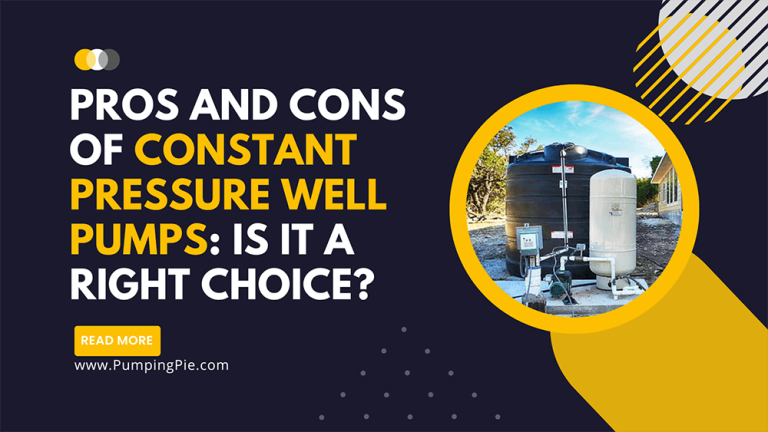
Pros And Cons Of Constant Pressure Well Pump: Is It A Right Choice?
Can you find a sector where we aren’t using technology nowadays? Probably not. Technology has become a part of our everyday life. And it’s updating continuously. That’s why people choose constant pressure pumps over traditional ones. But what makes it better than a standard pump? What are the pros and cons of constant pressure well…

Well Pump Overheats Shuts Off: 10 Possible Reasons & Solutions
A well pump overheats when the water demand exceeds what the pump can provide. When this happens, your pump shuts off automatically to prevent an electrical fire or power surge that could damage your entire system. So, what to do when the well pump overheats and shuts off? Check the pressure tank and breaker box for…
Leave a Reply Cancel reply
Your email address will not be published. Required fields are marked *
Save my name, email, and website in this browser for the next time I comment.

(352) 316-4088
- Our Warranties
- Employment Opportunities
- City & Municipal Water Testing
- Water Pressure & Water Storage Tank Systems
- Hard Water Treatment
- Reverse Osmosis System
- Water Purification & Water Filters
- Water Softener Installation & Repairs
- Well Camera Surveys
- Solar Powered Well Pumps
- Water & Well System Inspections
- Well Drilling Services
- Well Pump Maintenance
- Well Pump Installation
- Well Pump Repair
- Well Water Testing
- Service Areas
Why Does My Well Pump Keep Tripping the Breaker?
You go to turn on your water only for nothing to come out. Confused, you decide to go check your breaker box, and, sure enough, the circuit breaker on your water pump has tripped. With so many possibilities of what could have happened, it can be hard to determine which one is the culprit. We at Perry’s Pump Repair will go over the five most common reasons your water pump is tripping your breaker and how to fix it.
5 Reasons Your Water Pump Is Tripping Your Circuit Breaker
Overloaded circuit.
This is one of the leading causes your submersible water pump will trip your breaker. Overloading is a phenomenon that happens when more energy than the circuit can handle passes through the device. The breaker prevents an overload of amperage from harming your pump or anything connected to it. If your water pump is pulling more energy than it should, this can cause the breaker to trip.
Solution : This is something you’ll want to leave to professionals. Electricity can be extremely dangerous to mess with if you aren’t professionally trained. We suggest you call your local electrician or reach out to us to see if it’s time for a new water pump .
Rain and Lightning
Here in Gainesville, you know we get almost daily summer thunderstorms and plenty of rain. While these weather conditions are just considered a part of everyday life in Florida, they can occasionally cause problems for your water pump.
A direct lightning strike can cause your water pump breaker to trip. Much like an overloaded circuit, this is due to the sudden surge of voltage all at once. Rain, on the other hand, can also cause a trip in your circuit breaker. This can be a sign of deeper problems such as deteriorating seals or even FLooding in your pump.
Solution : If your circuit breaker trips immediately after a lightning strike, you should be able to switch back on fine with no issue. If it pops again, the lightning may have caused damage to your wires, and you’ll want to call in a professional to prevent hazards like an electrical fire. If you believe rain may be the culprit, reach out to us so we can inspect and repair any damaged seals or FLooding.
Leaks in Pump
Sometimes, your water pump or its outer shell (called the water pump housing) can develop a leak. This can be caused by several different factors such as faulty sealant or using the incorrect coolant. If a leak has developed, it may get water on its wires or inside the pump itself, causing them to short-circuit and trip the breaker.
Solution : Since it may be hard to determine where the leak is or if it’s safe for an untrained hand to repair, leaks are best left to a professional water pump repair service like Perry’s Pump Repair. One of the best ways to solve this is to keep it from happening in the first place by having a preventative maintenance plan.
Wiring Issues
If you’re finding your breaker is tripping as soon as you turn it back on, it may not be an issue with the pump itself but its wiring. The wires could be fried, short-circuited, or simply not connected securely to an electrical source. Occasionally, wire damage can be caused by rodents or other pests that may have chewed through them.
Solution : Since this is dealing with electricity, you’ll want to have an electrician check your wiring and fix any issues they may see.
Clogged Impeller
One of the key components of your submersible water pump is its impeller. The impeller uses the energy from the motor to actually pump your water. Through normal use and wear, the impeller may become clogged, causing your circuit breaker to trip. If you’re noticing a frequently tripping breaker and a grinding noise from your water pump, a clogged impeller is likely the issue.
Solution : Often, this is an easy fix to do at home. Identify where your water pump’s impeller is and simply remove any debris from the area.
Call in the Professionals at Perry’s Pump Repair for All Your Water Pump Maintenance Needs
A tripped water pump circuit breaker can be quite frustrating. Not only does it indicate a problem, but it keeps water from flowing into your home. While we may not be electricians, we are well pump experts, and we can tell you what needs to happen next. We’ll help you identify what the issue is, how to fix it, and treat it to last with our warranty guarantee if we can help. Call us today to see how we can help keep your water pump properly functioning and maintained.

“Looking for a upright man to work on all your well problems? Perry’s Pump Repair is the place to call. They can help you over the phone or be on-site. We see that they are first looking out for YOU! I had some bad times with other companies selling all to me, but all I needed was one or two things. (up and running)”
Timothy Moore
“We hired Perry’s Pump Repair to install a new 4″ submersible well a few weeks back. Mr. Chris and his sweet wife answered all of our many questions … we had plenty! The communication before, during, and after the process exceeded our expectations. We appreciated that he used 100% USA parts.”
Kristina Walker
“These are guys who stayed until 10 pm in the rain and mugginess to get my well pump replaced. They might not be the cheapest outfit around but they warranty their work and their pumps. The one I had replaced was only 3 years old and not under warranty so Perry’s 5-year coverage on my new pump is comforting.”
Brad MacDonald
Anytime I have a problem with my well, I call these guys. Even in Jacksonville, they get me on the schedule as soon as they can. Always within 2 days. Each time they are courteous and quick.
Our company motto is “ Expect to be Impressed! ” Schedule your water consultation appointment today. We service all types of water needs from residential to commercial. We look forward to earning your business. Proudly serving the North Central Florida area.

ADVERTISEMENT

- POST a QUESTION or COMMENT about checking electrical wiring to diagnose well pump problems such as tripping breakers, blown fuses, weak pump performance or no water delivery from a well water pump
We also provide a more comprehensive INDEX to RELATED ARTICLES for this topic, but we recommend that you use the page top or bottom SEARCH BOX as a quick way to find information you need.

Questions & answers about how to fix problems in well pump wiring, posted originally at WATER PUMP WIRING REPAIR - be sure to review the help given in that original article.
On 2022-03-28 by Inspectapedia Com Moderator - water in submersible well pump motor needs replacement
@Ryan j wheeler, I would replace the entire pump.
On 2022-03-28 by Ryan j wheeler
I have water inside my submersible pump motor.

On 2022-01-26 by Inspectapedia Com Moderator
- well flow rate is inadequate + a pump protection switch turns off the pump to protect it from damage should the pump be run "dry"
- pump pressure control switch pressure sensor port OR the small pipe nipple or tube bringing water pressure to the pump switch is debris clogged
On 2022-01-26 by Rob
I have new 3wire 1/2 hp pump new pressure tank new pressure switch new wiring to well head . Checked continuity on wires from well head to motor.
Well runs and cycles fine intermittently looses pressure to 0 and stops for 2-3 minutes then starts again . There is power when not running??? Starts again after 2 1/2 mins consistently
Pressure switch points are closed when this happens
On 2022-01-17 by Inspectapedia Com Moderator - what to do if the pump won't start
@Anonymous, In the Index to Related Articles you will find an article titled "Pump will not start". It contains some good diagnostic steps to help you out.
On 2022-01-17 by Anonymous
the pump switch will not cycle on. I replaced the switch and I had a service tech come out and found one leg of the well pump wiring at 15 amps and the other at 3 amps changed controller and switch with no change.
The switch will not turn itself on and must be manually turned on. Is the motor on the submersible pump bad. they are coming tomorrow to change it but seem unsure of the issure
On 2021-11-27 by Inspectapedia Com Moderator - long-electrical-wire run question
@Guy Priano, I don't think the problem is bleed-over; the problem is running a too-small wire size over a very long run that causes an excessive voltage drop. Please find your question repeated along with a detailed reply and our suggestions for wire sizes and an alternative, now found at SE CABLE & WIRE SIZES FOR LONG RUNS Be sure to read those notes as we've written in considerable detail to give a careful answer and explanation in reply to your question.
On 2021-11-24 by Guy Priano
When I replace the wire it will be in conduit. Maybe I need three separate wires that are direct burial so there is no bleed over? Just need to know what kind and size of wire that will perform without problems.
On 2021-11-02 by Inspectapedia Com Moderator - pump failed after a heavy rain storm
@Aaron, It sounds like an electrician is needed to trace the circuit to find the break or open connection. Watch out : a broken, live electrical wire can be a serious shock or even electrocution hazard.
On 2021-11-02 by Aaron
My water stoped after a bad rain storm I changed the pressure switch and got new control box. I am getting power in and out pressure switch but the control box is far away down by the road.
When I check the power coming to control box L1 the white wire reads 0 and the black wire reads 120. I need 230
does this mean I have a break in the wire from pressure switch to control box or have I don’t something wrong? Any help greatly appreciated been going on a week without water !!
On 2021-10-28 by Inspectapedia Com Moderator - shocked when touching well casing
@Anonymous, Watch out : Turn off the well circuit immediately to avoid dangerous or fatal electric shock. Someone could be killed!
Your electrician or pump installer will perhaps test the pump circuit and may find shorted wires.
On 2021-10-28 by Anonymous
When I touch well casing I feel electric current but pump will not run
On 2021-09-22 by inspectapedia.com.moderator (mod) - pump protection device operation
@Eddie, Just some vague guesses: consider how the pump protection device works. Usually it's monitoring current draw or Amps as an indicator that a pump may be running dry (and thus subject to damage). So we could have low voltage, or a failing sensor in the pump protection device itself, or even a constriction in the piping system (you've checked for this).
(this reader's question, our reply, and the complete discussion is now found at AMPS MEASUREMENT METHODS )
On 2021-09-22 by Eddie
I have a submersible well pump that fills a 5000 gal. storage tank. Pump motor is controlled by a pump motor control with protection device inside, and a Pumpmaster float switch.
My problem, that is now present from original installation, seems to be control of the power to the pump. When float switch activates pump motor, it fills normally for about 10 minutes and then clicks off and immediately back on, and keeps pumping as if nothing happened. A few minutes later it repeats.
On 2021-09-19 by inspectapedia.com.moderator (mod)
@Tshuma, Lightning strike Short circuit Jammed impeller Ran dry Damaged wire Jammed pressure control Other
On 2021-09-19 by Tshuma
Causes of burning of a cable of a submissible pump
On 2021-09-07 by inspectapedia.com.moderator (mod) - use of the orange wire at a pressure control switch
@Harriet Blain, Sorry I don't see an orange wire, but I do see
two red and a
yellow and a
Two wires are power in to the switch and two are power out to the pump.
The terminals are labeled at least inside the switch cover showing which two connections are LINE (incoming power) and the other two will be LOAD (to the pump). Watch out: At least one of your wires, the yellow one, is burned and overheated. The problem could be a bad switch (have it replaced) or the pump itself could be bad. Watch out: there is live voltage at those terminals. Touching them with power -on you could be shocked or killed.
On 2021-09-07 by Harriet Blain
What is the orange wire to a pressure tank switch for? Woke up this morning to no water

On 2021-07-29 by inspectapedia.com.moderator (mod) - temporarily bypass the Pumptec pump safer switch
@Dave, I would start by checking that the pump works properly by running it directly, BRIEFLY, temporarily bypassing the Pumptec pump saver. https://inspectapedia.com/water/Water-Pump-Control-Switch-Manuals.php WATER PUMP PRESSURE SWITCH MANUALS gives us Franklin Electric, PUMPTEC-PLUS PUMP CONTROL & PROTECTION SYSTEM INSTALLATION GUIDE [PDF] (2013) Franklin Electric, op. ci at https://inspectapedia.com/water/Pumptec-Plus-Manual-Franklin.pdf that has some nice wiring illustrations. Also for other readers we provide: https://inspectapedia.com/water/Water-Pump-Repair-Manuals.php WATER PUMP & TANK I&O & REPAIR MANUALS
On 2021-07-29 by Dave - how to wire my pumptec to my control box
I just installed a new 1 hp submersible pump with a Franklin control box it turns out I have a low flow well one half to one gal. Per minute so I bought a pumptec pump saver.
I need to know how to wire my pumptec to my control box and my float switch.the way I have it wired now there is still one twenty going to the pump in all three wires even though the pumptec turned off the pump there is no water coming out of the well. Any help would be greatly appreciated thank you in advance.
On 2021-07-04 by inspectapedia.com.moderator (mod) - how is a 240V circuit measured?
@Don, In a typical 240 volt electrical circuit you will find half that amount when measuring between each of the individual wires and neutral or ground.
On 2021-07-04 by Don
Trying to test the wires going power to the pump and I'm only getting 130 from one wire and it's a 230 pump at the pressure switch of this deep well submersible pump I am getting two 1:30 readings from two separate screws what should the reading be at the pump I believe it should be 1:30 * 2
On 2021-05-22 by danjoefriedman (mod) - easy tests for a pump wire shorted to ground
@Joe, Sometimes some simple electrical tests using a VOM or DMM can tell you whether it is a short to ground or a hot neutral short or an open wire. But ultimately you'll need to follow the wiring to find the damage.
On 2021-05-22 y Joe
Hi my connection between well pump and irrigation panel is failing , there is power but does not relay from well to box, any ideas? Thank you
On 2021-05-15 by (mod) - air leaks in well piping
@Anonymous, Check for any air leaks in the piping which you can tell by the pump changing noise or sound as it runs and check for a damaged or clogged impeller in the pump
On 2021-05-14 by Anonymous
Pump is primed but will not pump water
On 2021-05-12 - by (mod) - electrical shorts or low voltage can damage a submersible well pump
@Cliff, I think that a submersible well pump could be damaged or put out of commission by electrical shorts or low voltage or other problems in the electrical supply.
On 2021-05-12 by Cliff
Is it possible that a submissive pump die of poor wiring
On 2021-05-07 - by (mod) - no voltage found on wires to pump
@Sam Smith, To answer with confidence I would need to know more about how and where you made your tests and also whether or not you have one simple pressure control switch or a switch that is in turn operating a 240 volt relay control showing at the top of this page. In general you would not expect to see voltage on the wires to the pump unless the pressure control switch was in the closed position. At that point if you're not seeing voltage at the pressure control switch on the pump wires and then I suspect the problem is the switch or relay.
On 2021-05-07 by Sam Smith
I'm showing 240 on the 2 wires of the relay coming from the power box. However, I'm not showing any voltage on the wires coming from the pump. I know I need to go towards the pump to see if there is another junction box and if so if it's showing 240 there. However, if the wires are ok is it likely that the water pump has gone bad?
On 2021-05-02 - by (mod) - where do we measure 220V?
@Tom, with two wires and 220 volts I would expect you would get 220 volts between the two wires coming from your electric panel. Are we on the same page here?
On 2021-05-02 by Tom
This is a big world water pump 220 volts 2 wire
With the closed circuit on the pressure switch the voltage reads 250 volts on one leg and 0 voltage on the other leg
I checked the voltage on the line and load on the pressure switch one side is 250 and the other side is 0
On 2021-02-08 - by (mod) - wiring a 120V pump up to 240V is likely to damage the pu,p
Edwin Unfortunately, sending 220VAC to a motor wired for 120VAC may damage the motor if in fact you fed it 220 volts; if you just fed one leg and thus 120V to the pump it may be ok, but you want to use the proper pressure control switch too.
On 2021-02-08 by Edwin J Ferrari
I hooked up new pump and forgot to change the switch from 220 to 110, will this hurt the pump capacity?
On 2021-01-24 by (mod) - unbalanced voltage on 2 legs of a 240VAC pump circuit
That sounds odd indeed, Jarry; I'd expect around 120VAC on each leg of a 240V circuit when tested from leg to ground, and around 240VAC when tested leg-to-leg. You could have a damaged wire enroute to the pump or a pump motor winding that's shorting. Sorry to say you may need to pull the pump to check wiring and pump motor Do keep me posted; what you find will help others.
On 2021-01-24 by jarry
ok the deep well pump i installed 2 years ago quit,,, its a 220 v 3 hp about 100 foot deep,,,,
well i had replaced the gauge and pressure switch when i put it in,,, its a 2 wire pump........
ok so i thought i tested circuits,, it sits like many below ground and the manual shut off was a fused box ......
so after i tested them and no breakers were tripped ,,,, i checked voltage and the voltage with wires on supply to fuse box disconnected show 120 on each,,, then i connected them and coming from the new breaker box they show 120 each side,,,, and good solid ground,,,,
but when i connect them to the pressure switch and pump and turn them on the one leg on the pressure switch goes to 168 and the other is like 78 v so the pump isnt working, i did unhook wires from the pressure switch and the continuity tester shows one leg and ground making continuity the other is ope.n. this pump being a 2 wire only has the pressure switch no control box my email is [email protected]
On 2021-01-18 - by (mod) - is the problem the pump or a leak in piping?
Are you certain that the problem is that the pump isn't running as opposed to a running pump but a leak or piping problem?
On 2021-01-17 by Greg
So I bypassed my pressure switch and starter box to test the 11 year old pump at my parents place. It had proper voltage and didn't kick on. So I replaced the pump with a brand new one. When I powered the system up nothing happened so I started trouble shooting the system as I always have. Everything tested just fine but still nothing. So I once again ran a jumper wire from the supply at the emergency shut off straight to the pump and still it did nothing.
I know for a fact it's getting proper voltage to the pump at all times no matter what. I'm returning the new pump tomorrow. Am I wrong thinking that the new pump is bad too? ( It's a 1/2 hp 2 wire 230V submersible deep well pump)
On 2020-12-22 - by (mod) - some water system component isn't working: which one?
What's not working, Amit: Water tank Water pump Water meter? I'll be glad to help but I need a clue about what we're discussing.
On 2020-12-22 by Amit Bijalwan
water tank pump meter... is not working...
On 2020-12-19 - by (mod) -
Gil Please tell me the "unit" brand and model
On 2020-12-19 by Gilbert Suazo jr
The unit was beeping. Now green light is flashing. What does it mean
On 2020-11-12 by (mod) - pump is tripping the circuit breaker th
June If your pump is tripping the circuit breaker the usual causes are a failing pump motor or possibly damaged electrical wiring.
On 2020-11-12 by june
our sumersable pump starts but a few minutes it trips
On 2020-10-28 - by (mod) - cause of repeated breaker tripping for your pump
Stephen The most common cause of repeated breaker tripping for your pump would be a failing pump motor; that may be due to a bad bearing, running the pump dry, or less common, low voltage or damaged wiring.
On 2020-10-28 by Chiboka Stephen
What are the causes of continue tripping off of over load switch on residential submersible pump
On 2020-07-29 by Robert
When my well pump comes on my line voltage goes down. I notice this as dimmed lights will dim even more. What would fix this symptom?
Do I need to run a larger wire size? My pump is probably 150' from the holding tank.
On 2020-07-12 - by (mod) - detect problem of well running out of water
Probably not, Jose. I may have been hasty (trying to answer too many questions too fast - apologies). The symptom you describe occurs usually when there is low flow rate of water into the well combined with a pump protection switch or device (designed to shut off the pump to prevent it from running "dry" and thus being damaged). A diagnostic step is to stop using water for as long as you can - several hours or more - to let the well recover (if it can). IF then you find that the pump delivers water normally, the problem is probably poor or low flow rate. Let me know and we can take it from there.
On 2020-07-12 by Jose
Thanks for the response Dan. Could the problem be a leaky foot valve if the pump doesn’t lose prime? The pump is able to immediately pump water every time it turns on but it only stays on for a few seconds. This happens even if I’m holding the pressure control “fill” lever.
On 2020-07-11 - by (mod) - signs of a leaky foot valve
Jose The no. 1 most common cause of loss of water after a power loss, provided the well or electrical system didn't itself take a direct lighting strike, is that the well had a pre-existing leaky foot valve. During the power outage the pump lost prime as water drained back into the well. Try re-priming the pump, but ultimately you'll need to replace the leaky foot valve or other check valve in the system.
On 2020-07-11 by Jose
BTW, I forgot to add that when the pump shuts off after running for a few seconds it won’t run again until about 20-30 seconds later, even if manually holding the pressure switch “fill” lever
We had a storm a few days ago and lighting (sounded fairly close) that cut our power off until the utility company fixed things a few hours later. We continued using water while power was out but had no water pressure when power came back. I replaced the old pressure switch with a new one that has the little lever to manually switch on the pump to refill the tank when pressure drops too low.
The pump only runs for a few seconds and then shuts off. I have to manually hold lever (over and over) until I finally get enough pressure in the tank where the switch takes over, but even then the pump only runs in 2-5 second increments until it reaches max pressure (60 PSI). Pump is about 5 years old without problems prior to this. What could be causing this issue??
On 2020-06-25 - by (mod) - is the pump 120V or 240V?
Really The pump may be a 220V motor unit - do you know? Do you have the pump IO manual? Is there a data tag on the pump giving its brand and model?
On 2020-06-22 by Really only2wires
How do I wire a old well pump . It doesn't have a ground wire ? There no place for one .
On 2020-04-30 - by (mod) - anytime I put on my water pump, the cucuit breaker Trips
Dave Two common causes of a circuit breaker tripping when the pump turns on are - a short circuit anywhere in the well pump wiring - those issues are discussed above on this page - a seized or frozen pump motor - details are at ELECTRIC MOTOR DIAGNOSTIC GUIDE inspectapedia.com/electric/Electric_Motor_Diagnosis.php but Watch out : if you're not familiar with safe electrical wiring and practices, don't fool with these tests yourself as you could be shocked or killed. Your electrician can do some simple tests, measuring resistance, to get a clue about what's happening. If the pump is a submersible unit, in the well, it may have to be pulled in any case, as the problem is either the wiring or the pump or its control switch.
On 2020-04-30 by Dave
Hi, i need help, anytime I put on my water pump, the cucuit breaker Trips, what could be the problem?
On 2020-03-20 - by (mod) - What would cause a main power fault indicator on my main system board?
Stuart I can but make a feeble guess as you don't give the name of equipment, model no. etc. that would permit consulting the installation and operation manual for your well pump (or other equipment unspecified) But typically a power fault means low voltage or loss of voltage or, less likely, reversed polarity. Knowing the context is diagnostic: is this a new indication on equipment previously installed and working properly or has the indicator always been on since installation?
On 2020-03-20 by Stuart Howroyd
What would cause a main power fault indicator on my main system board?
Question: what caused my well pump pressure control switch to burn up like this?

Wire on well pump charred. Water shut off and when restarted saw a spark. Can I just insulate? How do I fix this please?
(See picture. It’s the burnt wire on the right)
Wire fried on well pump. Water stopped working. Then wire sparked when turned back on. How can I fix it please?(far right wire see image) --> - Valerie
Moderator reply: burned wiring probably means shorted wires or damaged / failed water pump
The burned wiring tells us that there was (probably) a short circuit in the wiring and/or a seized pump motor.
It is of course unsafe.
I worry as well that no fuse blew nor circuit breaker tripped.
Do not just insulate and turn power back on.
Leave the circuit off to avoid a fire and shock hazard - sorry I know that's not exactly convenient.
Your repair tech or electrician will do some tests to find out if the problem is a seized pump motor or shorted wires - that's when we will know what repair is needed.
You will need at least a new pressure control switch (notice the overheated, burned contacts not just the wires), and perhaps some new wire and most trouble, perhaps a new pump).
If the pump motor is seized (or overheated and failed) that in turn can be caused by a variety of problems such as well running dry or pump running constantly.
Do keep me posted.
Reader follow-up: my pump was cycling on and off alot
Thank you so much for your quick response Daniel. My water pump cycles a lot.
Do you think the two are related. Over used/overworked system?
Just curious. Hope to have a specialist come out today. Will definitely keep you posted. Thanks again.
Moderator reply: pump short cycling can cause well pump damage and / or pressure switch burn-up
Yes - if you search InspectApedia.com with the on page search box you will find our articles on WATER PUMP SHORT CYCLING - home
Often the cause is a water-logged pressure tank.
But prolonged rapid on-off cycling might indeed burn up a pressure control switch. If that was the cause you will be so lucky because the fix is pretty easy and all above ground.
Replace the switch and any burned wiring and correct the air charge in your pressure tank.
Search InspectApedia.com for
WATER TANK AIR, HOW TO ADD
and also see
WATER TANK AIR HOW MUCH TO ADD
Your pressure control switch is damaged and should be replaced. More details are
at WATER PUMP CONTROLS & SWITCHES - home
WATER PUMP SWITCH INSTALLATION MANUALS
Watch out : don't try electrical wiring yourself if you're not trained as you could be shocked or killed.
On 2020-01-19 by (mod) - low-voltage problem at the well pump
Bobby That certainly sounds like a low-voltage problem. Often when a pump motor itself is failing it can draw high current and dim lights, but as you have a new pump I suspect the problem is in the wiring or panel or electrical service itself. An electrician would 1. check supply voltage right at the electrical panel
2. check every wiring connection for looseness, overheating, arcing, corrosion, etc.
3. check circuit fusing and wire sizes and lengths Watch out : if you are not trained in safe electrical work you could be shocked or killed. Don't fool with it.
On 2020-01-19 by Bobby
There's low voltages going to my pump when the points are open when I close the points it gets higher voltage I have a light in well house so I can see when pump is running its dim with points open gets bright whe there closed what should I be looking for short or miss wiring I've change the pump all doing the same
On 2019-04-08 1 by (mod) - intermittent loss of water pressure
Tonya Most likely yes there is a central underlying issue - either a very low flow rate well or simply a loss of well prime.
On 2019-04-08 by Tonya Crabtree
The problem we are having after a period of a couple of months of no use of the property we arrive with no water. The 1st time the delay box was replaced,2 nd time the pump was replaced now the same issue. During last stay at property during heavy usage the water would recover slowly. Is there a main issue that could be causing these other issues to fail?
On 2019-03-28 1 by (mod) - Where do the black and white wire go on a well pump?
Aaron I cannot bet your life or the fire-safety of your building by making a guess at exactly what wiring you're trying to connect - I've got just no information about what your pump and control wires are. Typically in electrical wiring Black = hot and White = neutral, particularly on 120VAC circuits. However if your pump is a 240V pump someone could have run a two wire circuit to it and both wires could be hot. So sorry but I can't give an answer to what wires go where on an unknown switch for an unknown pump. It's just too dangerous. Watch out : Please keep in mind that if you are not trained and familiar with proper and safe electrical wiring, making a mistake can kill someone or burn down the building.
On 2019-03-20 by Aaron
Where do the black and white wire go on a well pump that has a regulator switch
On 2019-03-05 by (mod) - damaged pump wiring - wires keep breaking
Anon: Please see your question and my detail reply at
WELL PUMP WIRING DAMAGE
On 2019-03-05 by Anonymous
Why would the wires in my well keep breaking
On 2019-01-17 by (mod) - testing a submersible pump
Yes, an experienced electrician or pump installer can get an idea if the pump motor is working properly by measuring its current draw when the pump is turned-on.
On 2019-01-17 by Ronnie Neathery is there any way I can test pump
I bought some new property that has a deep well pump which is 375' to 400', it is a old homestead when the previous owners left they cut all the wires in well casing and at concrete slab,why is beyond me.
It's 3 wire, is there any way I can test pump before I sink money in a control box,new wire and pressure tank or do I just need to pull pump and replace?
On 2019-11-08 by (mod) - why your well pump keeps tripping the circuit breaker:
Bush: Let's diagnose this problem of why your well pump keeps tripping the circuit breaker: 1. What is the ampacity or AMPS number on the circuit breaker? Is it 15A, 20A or something larger, and is the breaker a single pole (one switch 120V) or double pole (two switch 240V) 2. Now take a look at the data tag on your water pump; is the pump 120V or 240V (some pumps can be wire to either voltage so if that's the case, how is your pump wired? and what is the AMPS rating of the pump - from the data tag Now if the pump AMPS is greater than the circuit amps, that alone would trip the circuit breaker; 3. About the prior pump motor seizing: that may occur if the pump is allowed to run "dry" for an extended period; IN turn that would mean that your well is out of water or nearly out of water and has a terrible recovery rate. If that's the case then running out of water happens even faster with a new bigger more-powerful well pump; Now if the new pump includes a pump protection feature, that could be turning off the pump. SO unless there is a wiring or ampacity error you need a plumber or well service company to open the well and inspect its condition and its water level and perhaps its flow rate. In the ARTICLE INDEX you'll find articles on how to test the well's flow rate or recovery rate.
On 2019-11-08 by Bush
My pump seized. I was advised to buy a much bigger pump. Installed the bigger pump to my old motor both with 0.75kw.when I turn on power, it pumps water for 3minutes,then the relay switch breaks, it automatically turns on after a minute, then breaks again in 2minutes.is it a motor problem or I need a much bigger circuit break?
On 2019-02-25 by (mod) - we have no water
Ed You should find the pump circuit in the main electrical panel and follow it from there. There may be another switch right at the location of your water pressure tank and pump controller.
Watch out : if you make a mistake and you're not familiar with safe electrical wiring you could be shocked or killed.
In the ARTICLE INDEX see NO WATER for a list of diagnostic steps
On 2019-02-25 by Ed
Have no water switched pressure switch and upgrade to 40/60 pumped air pressure to 38 psi volt metter saying no amperage from pump and 240 from house cant find a switch to turn pump system on
On 2019-01-05 - by (mod) - pump stops after just adding 2-3 psi to the pressure system
Anon When a pump stops after just adding 2-3 psi to the pressure system my first guess is that it is significantly mis-adjusted - perhaps on the differential screw or nut. But if you bought and installed a brand new 30/50 pressure controller And if you cleared or replaced the tubing or pipe that brings water pressure to the control from the pump or piping or tank, then yes, I'm stumped too. Can I assume that you've checked the water pressure with a reliable, independent pressure gauge to confirm that you're only seeing 2-3 psi? What happens if the pump is forced to keep running independently of the switch? If the pump can't develop more than 2-3 psi in that case there's either no water available or a gross water pipe leak or a pump that is itself damaged - say a bad impeller, low voltage, etc. Watch out : forcing the pump to run on without the pressure control is dangerous: if you exceed the tank and piping rated pressure you can blow out a pipe or tank, risking injury or death to anyone nearby as well as, of course, flooding the area. In sum I want enough diagnostic steps to figure out where the problem really lies: - in the pressure control switch - in the pump itself - in the piping - in the well's water level and flow rate - in an ancillary pump protection device
On 2019-01-05 by Anonymous
Nothing compare to my situation.., pressure switch contact stay on and pump go for 2-3 psi then stop 15-20 sec and start again numeros time with contact always on "ON" position.. My plumber have no answer to this trouble and will ask others plumbers for troublesoothiing
On 2019-01-01 - by (mod) - best diagnostics for the short cycling well pump
Anon The best diagnostics for the short cycling well pump that you described are in the article index that you will find a live link for near the top or bottom of this page. Look through that list of Articles to find short cycling and you will see the diagnostic and repair routine.
On 2018-12-24 by (mod) - only 120 V at a 240V pump hook-up
Darryl I'd like to help but am a bit scared of you getting electrocuted (killed) on Christmas Eve. If the pump uses 220 and only one line has power (120 or 110V) then the other line is open, and dangerous. If you can't find the break in the wiring it'd be safest to leave power off until you have an electrician on site. I'm not sure what the water valve switch is. The water pump ought to be completely independent from the septic lift pump.
On 2018-12-24 by Darryl
I have a 220 volt submersible pump for domestic water. It stopped working. Only 110 volt at the switch. Checking breaker, I have 220. However I noticed a wire labelled water valve switch inline with one leg of pump supply. It would appear this is open.
What is this water valve switch. Note , I have above ground septic bed with lift pump. Merry xmas. Help
On 2018-11-15 by (mod) - lost all water pressure, manually re-set the pump - repair people hot wired the pump and burned things up
That sounds as if a pump protection switch OR a circuit breaker was shutting off the pump circuit due to a problem that could be with the well itself (running out of water) or with the pump (drawing excessive current).
The bad news is that when keep forcing a pump to run when its protection equipment keeps turning it off, we risk creating a more-costly repair: the pump motor overheats and is damaged and perhaps ruined, or other pump parts like an impeller are ruined by running dry.
A pump can also be damaged if it's a 240 volt pump getting power on just one leg (120V) of the circuit - if you keep forcing it to "run".
Whoever was helping you was NOT in my OPINION the most-expert person in the box.
If a pump is damaged and won't run, replacing the water pressure tank won't fix the pump. So I'm thrilled that the onsite tech concluded "the water pressure tank was not the issue"
The technician was better than your first onsite guy in tracing the pump problem to a loss of power on one of the two 120V legs of what sounds like a 240V pump.
Now we read that there's a fuse panel problem that needs to be repaired
Watch out : that's an unsafe condition - you need help from a licensed electrician.
And yes, it sounds as if the pump may need to be replaced.
An experienced technician should know how to measure the current draw of the pump before pulling it out of the well - that can tell us if the pump is working properly or not.
Watch out : bypassing fuses or circuit breakers to "test" an electrical circuit is something that some nervy and in my OPINION under-trained service people might do, but in my view it's a serious error that risks starting a building fire or shocking somebody or worse.
So yeah, your pump people don't sound like they're innocent here, but unfortunately, you, as a "non-expert" probably had already damaged if not ruined your pump by continually forcing it to run when it was trying to shut itself off to avoid damage.
So you share some of the blame. The unfortunate compounding of trouble here is that the people you called
- went ahead with expensive repairs that were probably not needed
- caused additional damage that increases the total job cost
On 2018-11-15 by Brad
My well problems began with total loss of water throughout my home. We could regain functionality by manually resetting the switch. This lasted for about two days, and then we had to do it again. The third time it happened, we were unable to manually reset the switch. We are a family of four that scrapes by on my income.....
so, if manually resetting the switch gave us a temporary solution while trying to figure out a long term solution, that was our goal. So, we called a plumber out for an estimate. He immediately noticed we had a blown fuse in our service box.
He used a piece of wire to jump the blown fuse and we still had spark at the switch, but in his words, not enough voltage to actually turn the pump on because the wire was too small. So he surmised that the tank was bad and that was making the switch over work and that's why the fuse popped. He did no electrical testing before coming to this conclusion....
.the price he quoted was nearly $800.....we contacted some family members and scraped together enough to cover the repair. The tech came out the next day and upon looking over the situation determined that the tank was not the issue....
that it was probably something to do with the absence of a check valve, or the switch itself.....
again, with zero electrical testing.....he told me that he couldn't simply add a check valve to the existing system or simply replace the switch because the plumbing was in disrepair and he'd probably break some things off when trying to do those things......
since we had already secured the funds to cover the repair I decided that replacing the tank as well as all components involved was a good idea since everything would be new and would ease my mind that it was all set.
Plus, since the old tank was still holding air pressure I could maybe sell it for $100 or something. So the tech went about replacing the tank and all components. When finished, he tested it....
he told me all of the following only after he had finished.....
he was only getting half of the 240 volts necessary at the switch with both fuses in place....so he took both fuses out and hard wired the fuse box. After doing so, he turned the breaker back on and something popped in the fuse box leaving a scorch mark inside of the fuse box and at that point he determined that the pump wasn't running.....
so, essentially we paid them $800 for a repair that didn't fix the problem and now are saying that our pump is bad, that they will need to pull and replace it and that will cost me an additional $1000....
my questions are numerous....is hardwiring and bypassing fuses standard practice?
Could the electrical spike that popped inside the box and scorched it have also fried my pump? They are telling me that the event that happened in the fuse box would definitely not have burned up my pump....
but they have been wrong and or shifty in general the whole time....are they trying to get me to pay them more to fix a problem that they created? And was that problem created by them due to incompetence and unsafe practices?
I really don't know what to do and I would love some insight from a different source than the one who has misdiagnosed, potentially damaged my property, and denied wrongdoing at every turn. Thank you
On 2018-12-31 by Anonymous
Hi there, 1/2 hp pump at 85', pressure switch (30-50) start at low pressure to fill tank but pump stop and start every 2-3 psi increase with contact on pressure switch "ON" all the time, ....tks
On 2018-12-26 by Anonymous - the 20amp pump circuit breaker keeps being thrown
It may run all day or it might trip in 5 mins. How do I check the wires to see if there's a short between house and well or if the short is in the well itself? The wire from the house is buried really deep.
On 2018-04-23 by (mod) - what percentage of the wire is damaged if a pump burns up?
Replacing all of the wire is surely less costly than replacing half of it and then having to pay the installer to pull the pump and wire again to replace more.
On 2018-04-23 by renee
Cause of destroyed pump was that the main water supply line was frozen. It was determined that the water supply line was buried 8" to 15". Plumbing code for buried water supply lines is 36" deep at min. Not sure how long the pump ran, approx 10 days.
On 2018-01-05 by Anonymous - Check the pressure tank air pre charge
On 2018-01-05 by Cody
When I was out there working on it I plugged in a space heater and that turned my pump on, that I previously tested for power and it did. The contacts on the switch were even closed so my pump should have been running but wasn’t until I plugged in the heater.
On 2018-01-05 by (mod) - Ran the pump but now have no power to it
And now I don’t have power from the breaker to the switch. It did get really wet out in my pump house do to burst pipe twice in the last 6 months. I changed the wire that runs from the breaker to the switch and the pump kicked on again but it shut off early again and now it reads dead again. I’m pulling my hair out please help
The new lines can be snaked through the larger diameter plastic line. But I can't know for sure what you've got with no other description than your note. Take a look at the fittings, wiring, and water piping involved.
Tom The situation you describe makes me nervous. A FRN type fuse is a delayed response fuse intended to tolerate a very brief moment of high current draw that some electrical equipment uses, like compressor motors or large milling machines. If you use a non FRN the fuse might indeed blow at equipment startup even if otherwise it could carry the running load of the equipment it serves. But when you get repeated fuse blows including the FRN-R-20 fuse that you moved to the troublemaking side of the panel it sounds to me as if there is a short or defect in the equipment. I would have left such equipment OFF, have an electrician inspect the equipment and measure its current draw for proper and safe operation before trying to get it going with the right time-delay fuses. A wrong fuse that is "wrong" only in missing a required time delay to tolerate a startup load might luckily (or because it's defective and unsafe) survive for a few motor starts in a panel. But that would not explain a pump motor that wouldn't start. What would explain it would be
- one side of a 240V circuit is dead or its fuse blown, so the pump is getting just half its voltage
- a seizing or failing pump motor
- a bad pump start/run capacitor
Could the wrong 20amp fuse keep the pressure switch from turning on the pump? I picked up the correct fuses today but I was just curious. Thoughts?
Continue reading at WATER PUMP WIRING REPAIR or select a topic from the closely-related articles below, or see the complete ARTICLE INDEX .
Recommended Articles
- WATER PUMP ELECTRICAL SWITCHES
- WATER PRESSURE CONTROL SWITCH ADJUSTMENTS
- WATER PUMP PRESSURE CONTROL SWITCH
- WATER PUMP PROTECTION SWITCH
- WATER PUMP RELAY SWITCH
- WATER PUMP WIRING DAMAGE
- WATER PUMP WIRING REPAIR
Or see this
INDEX to RELATED ARTICLES: ARTICLE INDEX to WATER SUPPLY, PUMPS TANKS WELLS
Or use the SEARCH BOX found below to Ask a Question or Search InspectApedia
Note: appearance of your Comment below may be delayed: if your comment contains an image, photograph, web link, or text that looks to the software as if it might be a web link, your posting will appear after it has been approved by a moderator . Apologies for the delay.
Only one image can be added per comment but you can post as many comments, and therefore images, as you like. You will not receive a notification when a response to your question has been posted. Please bookmark this page to make it easy for you to check back for our response. Our Comment Box is provided by Countable Web Productions countable.ca
- Pumptrol® Pressure Switch Adjustment, Square D, Schneider Electric Corporation , 8001 Knightdale Blvd., Knightdale< NC 27545 1-888-778-2733 - Square D Technical Library, web search 07/24/2010 original source: http://ecatalog.squared.com/techlib/docdetail.cfm?oid=09008926800a93be
- 9013 Pumptrol® Commercial Pressure Switches Type F and 9013 Commercial Pressure Switches Type G, Catalog, SquareD, Schneider Electric Industries SAS, Schneider Electric Industries SAS, web search 02/23/2011, original source: http://ecatalog.squared.com/pubs/Machine Control/ Pressure-Float-Vacuum Switches/Pressure Switches-Water and Air/9013CT9701.pdf Square D is a brand of Schneider Electric.
- The Type FSG is the standard water pump switch, suitable for all types of pumps: jets, submersible, reciprocating, etc.
- The Type FYG is designed to meet higher horsepower and pressure requirements.
- The Type FRG is reverse acting: the contacts open on falling pressure. All are diaphragm actuated.
- Our recommended books about building & mechanical systems design, inspection, problem diagnosis, and repair, and about indoor environment and IAQ testing, diagnosis, and cleanup are at the InspectAPedia Bookstore . Also see our Book Reviews - InspectAPedia.
- In addition to citations & references found in this article, see the research citations given at the end of the related articles found at our suggested CONTINUE READING or RECOMMENDED ARTICLES .
- Carson, Dunlop & Associates Ltd., 120 Carlton Street Suite 407, Toronto ON M5A 4K2. Tel: (416) 964-9415 1-800-268-7070 Email: [email protected] . Alan Carson is a past president of ASHI, the American Society of Home Inspectors. Thanks to Alan Carson and Bob Dunlop, for permission for InspectAPedia to use text excerpts from The HOME REFERENCE BOOK - the Encyclopedia of Homes and to use illustrations from The ILLUSTRATED HOME . Carson Dunlop Associates provides extensive home inspection education and report writing material. In gratitude we provide links to tsome Carson Dunlop Associates products and services.
Serving South Carolina Since 1960

Why Does The Breaker On My Well Pump Keep Tripping?
One of the most common reasons why the breaker on your well pump might keep tripping is due to an overloaded circuit. This typically happens when too many devices or appliances are simultaneously drawing power from the same circuit. For instance, if your well pump shares a circuit with other high-powered appliances, the combined energy requirement may exceed the circuit’s capacity, causing the breaker to trip as a safety measure.

As the owner of Austin Drilling & Well Repair Inc, a licensed well pump repair company in Columbia, SC, I understand the importance of a reliable well pump for a consistent water supply. However, a tripping circuit breaker can disrupt your well’s performance, leaving you without water and in need of prompt solutions. In this comprehensive guide, we’ll explore common reasons why the breaker to your well pump may trip and offer practical tips to address the issue effectively.
Reason 1: Overloading of the Circuit An overloaded circuit is one of the most common reasons why the breaker to your well pump may trip. When the well pump draws more current than the circuit can handle, the breaker automatically shuts off the power to prevent electrical hazards.
Solution: Reduce the electrical load on the circuit by disconnecting or turning off any other electrical appliances or devices connected to the same circuit. Consider redistributing electrical loads across different circuits to ensure balanced power distribution.
Reason 2: Motor Issues Issues with the well pump motor can also lead to breaker tripping. Motor problems, such as a short circuit or damaged windings, can cause excessive current draw, triggering the breaker’s protection mechanism.
Solution: If you suspect motor issues, it’s best to seek professional assistance from Austin Drilling & Well Repair Inc. Our experienced well pump technicians can inspect and diagnose the motor for any damage or malfunction. Depending on the severity of the problem, we can recommend motor repairs or replacements.
Reason 3: Waterlogged Well Pump A waterlogged well pump is a common issue in wells with a submersible pump. When the pump’s motor becomes flooded with water, it can cause the breaker to trip due to electrical short circuits.
Solution: A waterlogged well pump requires immediate attention from a professional well contractor. Contact Austin Drilling & Well Repair Inc to inspect the well and determine the cause of the waterlogging. Proper sealing and wellhead maintenance can prevent this issue from recurring.
Reason 4: Faulty Wiring or Connections Loose or damaged wiring and connections within the well pump system can lead to increased resistance and heat buildup. This can trip the breaker as a protective measure.
Solution: Regularly inspect the wiring and connections of your well pump system. If you notice any loose or damaged components, contact Austin Drilling & Well Repair Inc to perform necessary repairs or replacements. Ensure all connections are securely tightened to prevent future issues.
Reason 5: Ground Faults Ground faults occur when an electrical current flows through an unintended path, bypassing the intended circuit. This can cause the breaker to trip.

Solution: Addressing ground faults requires expertise and specialized equipment. Contact Austin Drilling & Well Repair Inc to perform a thorough well inspection and identify any ground faults in your well pump system. Proper grounding of electrical components is crucial for preventing future tripping.
Well Pump Breaker Keeps Tripping: Call Today
A tripping breaker can be frustrating and disruptive to your well’s performance. By understanding the common reasons why breakers trip and implementing the recommended solutions from Austin Drilling & Well Repair Inc , you can address the issue effectively and ensure a reliable water supply from your well. Regular maintenance and professional inspections are essential for preventing future breaker trips and maintaining the optimal performance of your well pump system . If you encounter repeated breaker tripping or require expert assistance, our dedicated team of well professionals is here to provide reliable solutions and exceptional service to keep your well operating smoothly.
Free Water Analysis
Installations.

803-926-5402
Monday – Friday 8am – 5pm
Information
Accreditation.

© AUSTIN DRILLING INC | All Rights Reserved
NOTICE. This Website Uses Cookies And Third Party Services to provide necessary website functionality, improve your experience and analyze our traffic. By using our website, you acknowledge and agree to our Terms of Use , Privacy Policy , Cookie Policy , and Accessibility Statement .
Well Pump Overload Keeps Tripping
For situations where we need water from a certain elevation to another, well pumps come in quite handy. These devices can transport water through areas that would otherwise be difficult to guide. However, we may run into issues with a well pump, especially one where our well pump overload keeps tripping.
Why does my water pump keep tripping the breaker?
To run a water pump needs to have a constant influx of electricity. In a situation where that electricity is cut, the water pump will cease to function. While there are a lot of outside dangers that can come our way when electricity outages are concerned, the pump itself can cause them. This situation will most often occur when said pump trips the breaker. Why does this happen? Let’s find out.
The pump is leaking
If our water pump leaks, the cases where the breaker is tipped can easily happen. The leaks most frequently occur from cracks in our water pump’s housing. When the housing is cracked, we’ll see water seep through said cracks. Reach to the pump’s electrical part, causing a short circuit.
This is not only a distracting situation that can slow down any work we are doing at the moment but also a hazard. Not treating these situations could pose a significant electrical hazard to our household and us. Despite starting off as a simple case of circuit breaker tipping, it can swiftly evolve into far more, especially if the water pump is near other electrical devices.
There’s an overload in the system
Yet another reason we may see circuit breakers being tipped frequently is overcharge. The overcharge occurs in a situation where the pump is drawing more power than the breaker is capable of handling. As a result, the breaker will end up tipping in order to prevent an overwhelming amount of electricity from being pulled. [ 1 ]
While the larger water pumps will require that energy, we’ll need to replace the breaker to allow electricity to flow. The issue of overcharge can often be avoided by purchasing the correct pump in the first place or the right breaker. There shouldn’t be more energy than the breaker can handle flowing through the connection if we want to avoid the situation where tipping happens.
Clogged impeller
An important part of a pump is an impeller. An impeller works the opposite of a propeller. Sucking in items rather than releasing them. Its performance can, potentially, lead to clogs happening. A clogged impeller will affect the water pump.
Having it try to dislodge the clog by seeking more electrical energy and then tipping the breaker as a result. If this occurs, inspect the impeller and remove debris that may be stuck in. [ 2 ]
Pressure switch
The pressure switch may be the issue in some situations. The switch could be worn out or malfunctioning. If that’s the case we find ourselves in, we could end up having more power being drawn into the pump. That surge of energy will lead to the eventual tipping of the circuit breaker. Take proper care of the pressure switch and make sure to check on it eventually. [ 3 ]
Pump tripping problem
We should consider these potential issues to resolve issues of a pump tripping the breaker. Fixing them will usually lead to a functional well pump that doesn’t trip the breaker and operates without a hitch. However, it is possible to end up with more complex issues in which situation professionals should be called.
Well breaker trips intermittently
Well pumps are mandatory to manage and maintain our well’s water level . However, their utility is only functional in situations where our pumps aren’t overwhelmed by some problem or where the flow of electricity is constant. The easiest way our flow of electricity can be through our breaker being tripped. If this frequently happens and becomes intermittent, we will have to deal with it.
These occasional cuts to our power will cause multiple issues to the overall system. The first and most obvious is that our well pump will not function the whole time, rendering it useless.
When a pump is constantly stopped and started, its internal workings of it can get messed up. What’s supposed to be reliable will get fried by the constant off-and-on situation that breaker being tripped causes.
Pump overload causes
Some configurations and specifications are tied to the parts of our pump that can impact its functionality too. The overload these can cause is dangerous, both as a hazard and as a danger to our pump.
Oversized impeller
An oversized impeller can be one such issue. The impeller will draw far more power which can be a quick way to end up overloading our pump. In situations such as this, we need to replace the impeller.
Additionally, this is a great reminder to consider your purchase. Do not buy overly powerful pump parts without being sure they can be accommodated.
Worn out parts
Another source of overcharge could stem simply from the pump being worn out or damaged. This is cause similar to that of standard cracks and leaks that may occur but usually assume age to be a factor too. In this situation, having consistent maintenance can prevent the problem before it happens.
Bad installation
Misalignment between the parts of the pump and the connections to the grid. When the installation of our pump isn’t properly done, we will frequently experience issues. One of these issues is overloading. It’s important to maintain the proper installation process to guarantee success. [ 4 ]
Well pump thermal overload
With pumps, we need protection from the potential electrical systems being shorted. One of the types of protection is thermal overload. Unfortunately, the thermal overload protection used on smaller pump motors often isn’t the best source of protection.
This malfunction of the thermal overload will often happen as a cause of other heat sources. Additionally, the sunlight could damage the pump likewise. Therefore, protecting the pump is key, whether from the sun or other sources of heat.
New well pump tripping breaker
A new well pump can cause issues with our circuit breaker the same way an old one can. However, the issues with the pump may stem from more than just our standard array of wear and tear or problematic parts. The new pump can suffer from an issue all on its own.
The most frequent problem we may face is simply that the item doesn’t fit with our electrical energy’s capacity. For example, we may have a pump that’s too powerful or doesn’t have all the required failsafe, leading to far more problems with said pump. This requires some extra inspection and planning when buying the pump to avoid.
What causes well pump to trip the breaker?

While we’ve seen what causes we may have for our well pump causing the problems, a few more should be considered. These problems can be as simple as incompatible parts or as complex as a major electrical malfunction.
Well Pump Motor
We can expect quite a few other issues with well pump motor malfunctioning. The problems are quickly going to crop up because electrical components can get quickly damaged by water.
Rodent or Pest Problem
The problem of small animals such as rats and cockroaches infesting our home can be extremely problematic. This is exceptionally troublesome for sump pumps as the pest can damage many pump parts. Additionally, pest infestations can damage our wiring, which can cause the breaker to trip. [ 5 ]
Well pump overload keeps tripping
When the issue persists, it’s usually best to get a detailed inspection of our system. Calling a professional to do a check on both electrical installation and our well pump is a good way to guarantee any outlying issues will be found. The problems could affect other devices without proper repairs, so getting a check done is universally useful.

- Pump, Deep Well Submersible Pump, 1Hp, 220V...
- 2 Wire Pump With Built In Control Box- Does...
- Country Of Origin : China
Well pumps are useful and, in some cases, key parts of transporting water from one area to the other. They are built to last and offer a simple operating procedure to boot. However, we could likely end up with a problem that affects the pump negatively.
To resolve the issue of breaker tripping, we should check all the potential causes of the problem. Additionally, monitoring the pump’s functionality can reassure us whether the problem we resolved was the only one. If it isn’t, and if none of the more basic malfunctions are to blame, professionals should be called in.

Michael Davis is a heating & plumbing expert who currently works as independent contractor in SC. He also writes for Plumbertip.
For almost 10 years he worked on various plumbing tasks across South Carolina.
Related Posts

How to Thaw Frozen Pipes Underground?

How to Fix Water Drainage Problems in Yard?

How to Replace Outdoor Faucet?
- Why Does My Well Pump Trip The Breaker?
If you have a well pump that keeps tripping the breaker, it can be a frustrating and inconvenient problem. When your well pump trips the breaker, it means that there is an issue causing the circuit to overload and the breaker to shut off the power supply. This can happen for several reasons, and it is important to identify the cause in order to fix the problem and prevent further issues in the future.
1. Overloading the Circuit
One common reason why a well pump may trip the breaker is that the circuit is being overloaded. This can happen if the well pump is drawing too much power, causing the breaker to shut off in order to prevent the wiring from overheating and potentially causing a fire. This can be caused by a malfunction in the well pump itself, such as a failing motor or a clogged filter that is causing the pump to work harder than usual. It can also be caused by other devices or appliances on the same circuit drawing too much power, such as a water heater or a sump pump.
2. Electrical Issues
Another common reason for a well pump to trip the breaker is due to electrical issues within the system. This can be caused by a short circuit, a ground fault, or a faulty electrical connection. When there is a short circuit, it means that there is a direct connection between the hot and neutral wires, causing a surge of electricity that can trip the breaker. A ground fault occurs when there is a connection between the hot wire and a ground wire, causing the electricity to flow through the ground instead of the intended circuit. A faulty electrical connection can also cause problems, such as loose or corroded wires, which can lead to overheating and tripping the breaker.
3. Motor Issues
If the well pump is experiencing motor issues, it can also cause the breaker to trip. This can be caused by a failing motor that is drawing more power than it should, or by a motor that is overheating due to a lack of lubrication or proper maintenance. When the motor is not functioning properly, it can cause the circuit to overload and trip the breaker in order to prevent damage to the pump or the wiring.
4. Well Pump Size
The size of the well pump can also play a role in whether or not it trips the breaker. If the pump is too large for the well or is operating at a higher pressure than it was designed for, it can draw more power than the circuit can handle, causing the breaker to trip. It is important to make sure that the well pump is properly sized for the well and that it is operating within the recommended pressure range in order to prevent overloading the circuit.
5. Age and Wear
Over time, well pumps can experience wear and tear that can lead to issues with tripping the breaker. As pumps age, components can wear out or become damaged, causing them to draw more power or malfunction in a way that can trip the breaker. Regular maintenance and inspections can help identify any potential issues before they become a problem and prevent the well pump from tripping the breaker.
In conclusion, there are several reasons why a well pump may trip the breaker, including overloading the circuit, electrical issues, motor problems, well pump size, and age and wear. It is important to identify the cause of the problem in order to fix it and prevent further issues in the future. Regular maintenance and inspections can help prevent well pump problems and ensure that your system is functioning properly. If you are experiencing issues with your well pump tripping the breaker, it is important to contact a water well professional to diagnose and repair the problem. By addressing the issue promptly, you can prevent further damage and ensure that your well pump is operating safely and efficiently.
Need Water Well Pump Service in Wewahitchka, FL?
Action Electric Motor & Pump Repair provides well pump repair service and water treatment systems to the city of Wewahitchka and the surrounding areas. We are a local family owned and operated business dedicated to providing our clients with exceptional service as well as high-quality workmanship since 1978. Our experts specialize in residential, commercial, and industrial pump repair. Other services Action Electric Motor & Pump Repair offers include well repair and replacement, water treatment as well as conditioning, electric motor rewinding, and more. We pride ourselves in offering the safest and most reliable water systems for our customers. Contact us today to learn more about what we can do for you!
Categorised in: Water Well Service & Repair , Well Pump Repair
- Drinking Water
- Electric Motor Installation
- Electric Motor Replacement
- Motor Repair
- Water Conditioning
- Water Filtration
- Water Pump Installation
- Water Pump Repair
- Water Pump Replacement
- Water Softeners
- Water Standards
- Water Treatment
- Water Well Service & Repair
- Water Well Systems
- Well Housing
- Well Inspections
- Well Plugging
- Well Pump Failure
- Well Pump Repair
- Well Water Testing
Recent Posts
- Can I Perform Some Well Water Pump Maintenance?
- How To Protect Your Well Water Supply
- How Are Florida’s Drinking Water Standards Set?
- What Are Some Ways I Can Protect My Well Water Supply?
- Water Conditioning Systems
- Electric Motor Sales
- Servicing Wewahitchka, FL

- Search forums
- Pumps and Tanks Well Forum & Blog. Water is life.
Well Pump Tripping Circuit Breaker
- Thread starter OnlyWhnChasd
- Start date Aug 5, 2014
Users who are viewing this thread
OnlyWhnChasd
- Aug 5, 2014
Well-Known Member
Tell us about the breaker.
Paid Advertisement
- 1 minute ago
- Add bookmark
Cary Austin
When running water for an extended period of time, does the pump cycle on and off every few minutes or does it run continuously at low pressure?
Reach4, it is on a 2-pole (I think that's what you call them) 50 amp breaker--two 25s that are "connected" together so it is one switch. Valveman, that is a great question. I am embarrassed to say I don't know. How do I tell when the pump is running? That seems like such a stupid question. I'm ashamed for myself. LOL
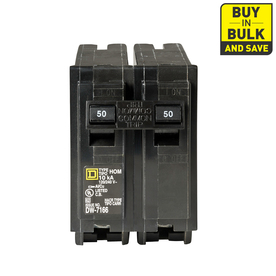
Interesting about the breaker. I always figured more was better so I never thought you could have one that was too large. I will look at having that swapped out. That would be awesome if that was the fix. I'm currently having visions of needing a new well pump--something that I would imagine is not going to be cheap on a 400+ foot well! Now that you've explained how (and I thank you for that!) I will investigate how the pump is running. Possible the pressure tank is bad? I do notice that when I fill the washing machine in the basement that the water pressure to drop throughout the house. Could that be a sign of a bad pressure tank or just part of living on a well? This stuff is all new to me...
A breaker won't blow because it is too large. However 50 amp breaker blowing without something smoking (exaggerating a bit) is suspect. I also hope the only problem is the breaker. The pressure drop when you fill the washing machine is unusual. Most washing machines don't draw water so fast. A clogged or under-sized whole-house filter could cause such a symptom of the whole house pressure dropping when filling the washer. Look at the pressure gauge at the pressure tank while filling the washer. I expect it to not instantly drop during such a load. You can troubleshoot that problem after you get the first problem resolved.
OnlyWhnChasd said: Could that be a sign of a bad pressure tank or just part of living on a well? This stuff is all new to me... Click to expand...
Back the the breaker--I misread your previous post and I think I'm misunderstanding the breakers. It is not a 2-pole 50 amp. It is a 2-pole with each switch labeled 25 amp--like the picture you posted above only 25 on the labels instead of 50. So perhaps the breaker is about right then as a 2-pole 25 amp? As for the pressure drop, I wouldn't be surprised if the whole-house filter is undersized. To me it looks tiny--smaller than a soda can. The only whole-house filters I've seen before have been those big canister ones that have the special wrench thingie to pry them apart. Thanks for the tip about checking the pressure gauge when filling the washer. I will do that. Breaker issue is definitely the priority though!
If the pump is running continuously when the breaker trips, it is most likely a motor or wire problem. If the pump is cycling on and off every few seconds or minutes while you are using water for extended periods of time, the cycling has probably already damaged the motor. The sooner you stop the pump from cycling the better. You might get lucky and have a bad starting capacitor or even the breakers could be bad. You could stick in a new pair of 30’s and see what happens.
1. I would check the wire size at the pressure switch. If it is #14 or #12, that is what I would expect with a 3/4 HP 240 V pump. If the wire is bigger, then I suspect your pump may be bigger than 3/4 HP. How old is your pump and controller? You may see a number printed on the wire, even if you don't know wire sizes by looking. Don't touch. Just look, after you pull the cover. Put the cover back on then. 2. Valveman suspects that it is possible that the pump is not restarting all of the time. Watching the pressure gauge during one of your big fills that pops a breaker could show that. Replacing the capacitor in the controller is not so expensive either. More expensive than a breaker, but still fairly cheap. Since you are not wanting to repeat your test too often, maybe you could record the pressure gauge by shooting a movie with a camera, evn the one on your smart phone, so that you could review the event. If during the movie, the pump goes on and off a few times, that could point to a problem and solution. There are more troubleshooting things that could be checked.
Checked the wire, it is #12. I don't know how old the pump is. The house itself was built in 1989 and we just bought it about six months ago. I'm looking at the controller and it lists a model of Goulds pump that was available in its 2009 product catalog (came up when I Googled) so maybe not that old? However, maybe they same model pump is available today that was available 20 years ago. I don't know how that works. I suppose it's also possible the controller is new but the pump isn't? I may pop the cover on the controller and just see if there is any evidence of the capacitor being bad. I've read that sometime they leak a tar type substance when they go bad? I am guessing around $2-3,000 to replace the pump, so I'm all in for replacing the breaker/capacitor/controller! Of course they way things usually work for me is all that stuff is replaced and I still end up spending $3k.
In the Trades
$3000.00 sounds like a lot, but when you factor in the amount of water that $3000.00 investment will give you, the water is damn near free.
craigpump said: $3000.00 sounds like a lot, but when you factor in the amount of water that $3000.00 investment will give you, the water is damn near free. Click to expand...

Jack of all trades Master of one
- Aug 6, 2014
A 3/4 HP motor should not require 25 Amps or even close to that at 230V. Why would you want to up the breaker to 30 amps ? 5750 Watts should make something smoke on the well motor controller, if it is drawing 25 amps. Chance is that there is something else on that circuit, Maybe a pool filter pump, or air conditioner, Water Heater ?
My book shows a 25 amp breaker is the right one to use for a 3/4HP. I would use a 30 anyway, because there is usually a light or something else tied in.
valveman said: My book shows a 25 amp breaker is the right one to use for a 3/4HP. I would use a 30 anyway, because there is usually a light or something else tied in. Click to expand...
I agree with you, but that is what the book says. Deadheading would actually drop the amps by about 50%.
Similar threads
- Oct 3, 2023
- Jan 15, 2024
- Mar 25, 2024
- Chaplain Pat
- Mar 16, 2024
- Oct 31, 2023
This is awkward, but...
It looks like you're using an ad blocker. We get it, but (1) terrylove.com can't live without ads, and (2) ad blockers can cause issues with videos and comments. If you'd like to support the site, please allow ads.
Just added to your cart
- 0800 118 2500
- CODE OF CONDUCT
- MINE AND QUARRY IMPROVEMENT
- SERVICE GUARANTEE
- SUSTAINABILITY
- Case Studies
- Request a Quote
4 Reasons Why Your Submersible Pump Might Be Tripping Its Circuit Breaker
Submersible pumps are a vital piece of kit for many industries and on many sites. This means that a pump which keeps tripping its circuit breaker is extremely frustrating. Not only does it impact on your workflow, but it also usually includes costly downtime too.
If you are wondering why submersible pump trip situations keep occurring on your site, you are not alone. But what are the 4 main reasons for them?

One common cause of a submersible pump tripping its breaker can be cracks or leaks in the housing. If your pump's housing is cracked, water could be getting into the pump through these cracks and causing it to short circuit. The same can be happening if you have a leak in your pump which is letting water in.
Another reason a submersible pump tripping circuit breaker event may happen is potential overload. But what does this mean? In simple terms, if your pump is drawing down more current than the breaker has capacity for, then it could cause it to trip out. Essentially, the breaker is doing its job as it detects that too much current is being drawn than it can safely handle.
Failed Seals
The next reason your pump could be tripping its breaker lies in failed mechanical seals. If the seals are perished or loose, then water can make its way into the pump windings. This will cause the breaker to trip until the seal is fixed. You may also find that a worn bearing could be the problem. This may cause the pump shaft to seize and mean that the starting current gets too high for your circuit breaker to handle.
Clogged Impeller
The impeller is a major part of any pump. A clogged impeller, however, will trip out your circuit breaker until it is cleared. Resolving this could be as simple as clearing debris which is clogging the impeller.
Submersible Pump Tripping Breaker? Call Atlantic Pumps
But what if you look into the above reasons and all looks ok? Or what if the issue cannot be repaired? Putting up with a submersible pump which is tripping out regularly is just not feasible. Here at Atlantic Pumps, we can assist by providing expert advice and also help you find a new pump if needed. We work across many industries and always put our customers first.
We also take a sustainable approach to our work and are committed to reducing energy waste from pumps. Our expert knowledge allows us to reduce energy usage by 20% on the average site! Call us today on 0800 118 2500 for more information.

Recent News
- A New Sense of Urgency Surrounds This Year's World Day for Safety and Health at Work
- Anglian Water makes total expenditure breakthroughs with Atlantic Pumps
- Atlantic to Exhibit at World Biogas Expo 2024!
- Atlantic Pumps appoints Senior Marketing Manager
- Hillhead 2024 is Coming!

- Applications
- Coal washing
- Filter press
- Mine effluents
- Sand processing
- Silt pumping
- Thickener underflow
- Wash plant feeds
- Water treatment
- Flygt pumps
- Brick & Concrete Block Manufacturing
- Construction
- Large scale manufacturing
- Quarrying & Aggregates
- Ready mix concrete
- Sustainable Energy

Copyright © 2022 Atlantic Pumps Limited. All rights Reserved. Designed and Developed by JDR Group.
- Choosing a selection results in a full page refresh.
- Press the space key then arrow keys to make a selection.
Request for Quote
TO ADD MULTIPLE ITEMS TO YOUR QUOTE, PLEASE FILL QTY FIELD THEN CLICK ON "ADD TO QUOTE"
Little Household Additions For Long-Lasting Happiness
- Cookware & Bakeware
- Food Storage Solutions
- Kitchen Furniture & Decor
- Kitchen Gadgets & Utensils
- Kitchen Renovation Ideas
- Small Kitchen Appliances
- Bathroom Accessories
- Bathroom Fixtures
- Bathroom Furniture
- Bedroom Furniture
- Kitchen Furniture
- Living Room Furniture
- Office Furniture
- Outdoor Furniture
- Interior Design Trends
- Space-Saving Solutions
- Garden Tools & Equipment
- Home DIY & Maintenance
- Landscaping Ideas
- Outdoor Entertaining
- Outdoor Lighting
- Outdoor Recreation & Activities
- Outdoor Structures
- Patio & Deck Designs
- Pet & Wildlife Care
- Plant Care & Gardening Tips
- Pool & Spa Care
- Seasonal & Event Decor
- Energy-Efficient Appliances
- Home Entertainment Systems
- Home Office Tech
- Latest Tech Trends in Home Improvement
- Security & Surveillance
- Smart Home Devices
- DIY Projects & Ideas
- Flooring & Tiling
- Home Renovation Guides
- Painting & Decorating
- Plumbing & Electrical
- Tools & Equipment
- Appliance Maintenance & Repair
- Bathroom Appliances
- Cleaning Appliances
- Heating & Cooling
- Home Automation Appliances
- Kitchen Appliances
- Laundry Appliances
- Lighting Appliances
- Other Appliances
- Air Quality & Filtration
- Ergonomic Home Solutions
- Family & Pet-Friendly Home Design
- Healthy Home Cooking
- Home Fitness Equipment
- Mindfulness & Relaxation Spaces
- Building Materials
- Construction Techniques
- Electrical and Plumbing Systems
- Hand & Power Tools
- Professional Contractor Advice
- Safety Gear & Equipment
- Worksite Management
- Energy-Saving Tips
- Home Insulation & Ventilation
- Solar Power Solutions
- Child & Elderly Safety at Home
- Emergency Preparedness
- Home Maintenance Checklists
- Pest Control Solutions
- Safety Equipment & Products
- Seasonal Home Care
- Budgeting & Planning Guides
- Buying Guides
- How-To Guides
- Maintenance & Care Guides
- Product Reviews
- Style & Inspiration Guides
- Bathroom Storage Ideas
- Closet & Wardrobe Organization
- Decluttering Tips & Tricks
- Garage Storage Solutions
- Kitchen Organizing Tools
- Living Room Organization
- Office & Desk Organizers
- Eco-Friendly Products
- Home Hacks & Tips
- Personalized Home Decor
- Seasonal & Holiday Decor
- Specialized Home Improvement Topics
- Unique Home Solutions
- How to Store
Home > Articles > Why Does My Water Pump Breaker Keep Tripping
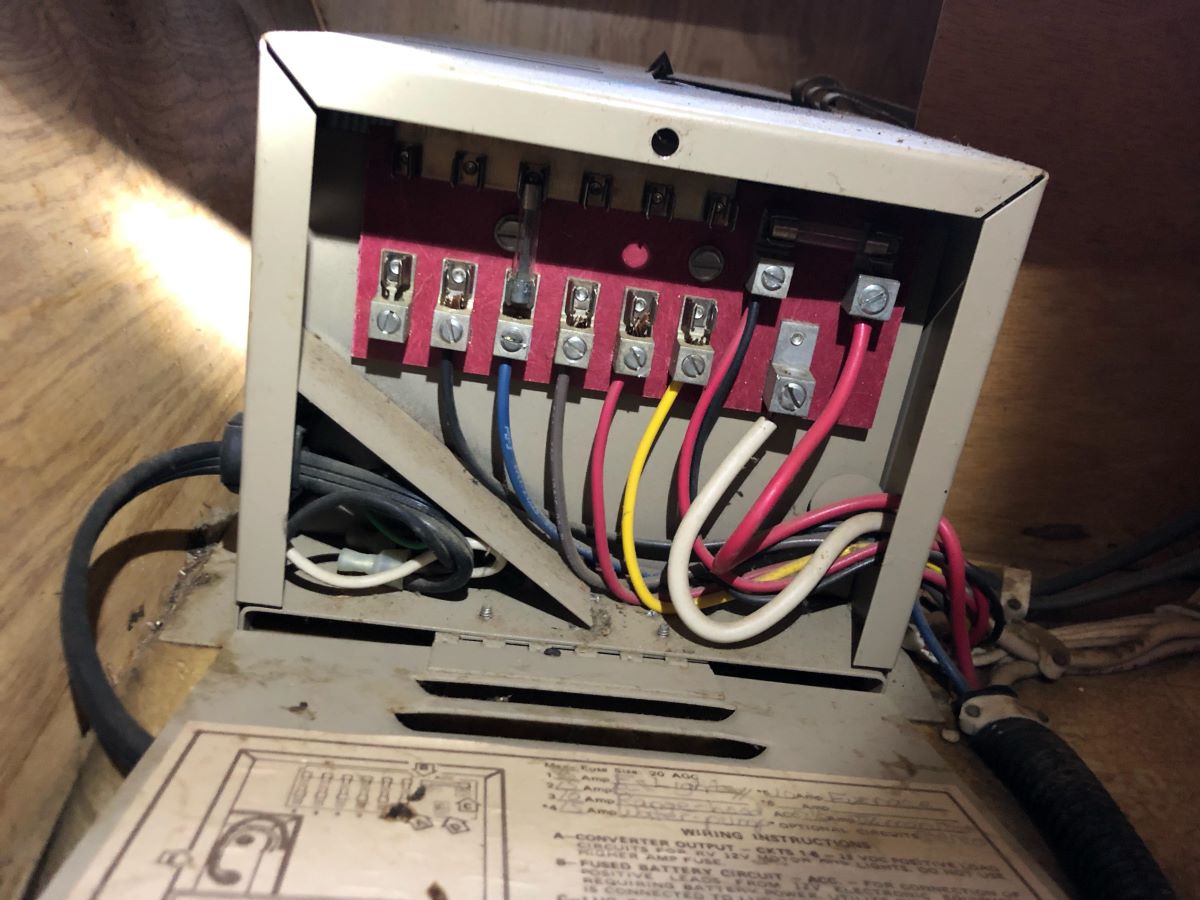
Why Does My Water Pump Breaker Keep Tripping
Modified: December 7, 2023
Written by: Alexander Johnson
Discover articles on why your water pump breaker keeps tripping and learn how to troubleshoot and prevent future issues. Find expert advice and solutions for a reliable water pump system.
- Home Appliances
- Water Pump Installation
(Many of the links in this article redirect to a specific reviewed product. Your purchase of these products through affiliate links helps to generate commission for Storables.com, at no extra cost. Learn more )
- Introduction
Water pump breakers are an essential component of water pumping systems, designed to protect the pump motor from electrical damage. If you’ve experienced the frustrating issue of your water pump breaker tripping repeatedly, you’re not alone. This common problem can disrupt the flow of water in your home or place of business, causing inconvenience and potential water damage.
In order to effectively troubleshoot and resolve this issue, it’s important to understand what a water pump breaker is and how it works. Additionally, knowing the common causes of breaker tripping can help you take preventive measures to avoid future disruptions.
In this article, we will delve into the world of water pump breakers and explore the reasons behind their consistent tripping. We will also provide troubleshooting steps that can help you identify and rectify the underlying issues. Lastly, we will discuss preventive measures you can take to minimize the chances of your water pump breaker tripping in the first place.
By the end of this article, you will have a comprehensive understanding of water pump breakers and the necessary knowledge to tackle any tripping problems you may encounter.
Key Takeaways:
- Understanding the working mechanism of water pump breakers and identifying common causes of tripping is crucial in troubleshooting the issue effectively. Regular maintenance, proper installation, and the use of voltage stabilizers and surge protectors are key preventive measures.
- By implementing preventive measures such as regular maintenance, proper installation, and seeking professional guidance when needed, you can minimize the occurrence of water pump breaker tripping and ensure the longevity and efficiency of your water pump system.
Read more : Why Does One Of My Breakers Keep Tripping
- Understanding Water Pump Breakers
Before diving into the causes and solutions for a tripping water pump breaker, it’s important to have a clear understanding of what a water pump breaker is and how it functions. A water pump breaker is a device that protects the pump motor from electrical damage by interrupting the flow of electricity when it detects an overload or fault in the system.
Within the breaker, there are several key components that work together to ensure the proper functioning of the water pump system. The main component is the circuit breaker itself, which is typically housed in a panel box near the pump. This breaker acts as a switch that can be manually turned on or off to control the flow of electricity to the motor.
When the water pump system is functioning normally, the circuit breaker allows electrical current to flow to the motor, powering it and allowing it to pump water. However, if the system experiences an electrical overload or fault, the breaker quickly detects this and trips, cutting off the flow of electricity to the motor to prevent damage.
Inside the breaker, there is a bimetallic strip or an electronic sensor that is designed to detect excessive current flow. When this strip or sensor detects a high current, it triggers a mechanism that physically disconnects the circuit, interrupting the flow of electricity. This action prevents the motor from drawing too much power and overheating, protecting it from damage.
Once the breaker trips, it needs to be manually reset by switching it off and then back on. This ensures that the system is safe and ready to be used again. It’s important to note that if the breaker continues to trip even after being reset, there is a deeper issue within the system that needs to be addressed.
Understanding the working mechanism of a water pump breaker is crucial in troubleshooting and resolving any tripping issues. By comprehending its function and the purpose it serves in protecting the pump motor, you can effectively identify and resolve the underlying problems that cause the breaker to trip.
- Common Causes of Water Pump Breaker Tripping
A tripping water pump breaker can be a frustrating and inconvenient issue to deal with. In order to effectively troubleshoot and resolve the problem, it’s important to understand the common causes behind the breaker tripping. Here are some of the most common causes:
- Electrical overload: One of the primary reasons for a water pump breaker to trip is an electrical overload. This occurs when the pump motor draws more current than the breaker is designed to handle. It can happen due to various factors such as running multiple appliances simultaneously, a malfunctioning motor, or a sudden increase in water demand. To resolve this issue, it may be necessary to reduce electrical load, upgrade the breaker, or consult an electrician.
- Faulty wiring or connections: Another common cause of breaker tripping is faulty wiring or connections. Over time, wires can become loose, damaged, or corroded, leading to poor electrical conductivity and potential short circuits. If the breaker senses an abnormal flow of electricity caused by faulty wiring, it will trip to prevent further damage. It is crucial to inspect and repair any faulty wiring or connections to resolve this issue.
- Motor malfunction: A malfunctioning pump motor can also cause the breaker to trip. Issues such as overheating, worn-out bearings, or a seized motor can result in excessive current draw, triggering the breaker. Regular maintenance and servicing of the motor can help identify and address any motor-related problems to prevent future breaker tripping.
- Low voltage or power fluctuations: In some cases, low voltage or power fluctuations in the electrical supply can lead to breaker tripping. Fluctuations in voltage can stress the motor and cause it to draw more current than usual, prompting the breaker to trip. Installing a voltage stabilizer or surge protector can help regulate the power supply and prevent such tripping issues.
- Pump or system defects: Lastly, defects in the water pump or the entire system can contribute to breaker tripping. Issues such as clogged intake filters, damaged impellers, or malfunctioning pressure switches can cause the pump to work harder, leading to increased power consumption and eventual breaker tripping. Regular maintenance and inspection of the pump and system components are essential to identify and rectify such defects.
By understanding these common causes of water pump breaker tripping, you can effectively diagnose the issue and take appropriate measures to resolve it. Whether it’s addressing electrical overload, fixing faulty wiring, servicing the motor, stabilizing the voltage, or repairing pump defects, identifying the root cause is crucial in ensuring optimal performance and avoiding future breaker tripping incidents.
Check for any potential electrical issues, such as a short circuit or overload, that may be causing the water pump breaker to trip. It’s also important to ensure that the pump is not drawing more current than the breaker can handle.
- Troubleshooting Steps for Water Pump Breaker Tripping
When faced with a tripping water pump breaker, it’s important to troubleshoot and identify the underlying issue to prevent further disruptions and potential damage. Here are five essential troubleshooting steps you can take:
- Step 1: Check for electrical overload: Begin by assessing the electrical load on the circuit. Ensure that the water pump is not running simultaneously with other high-power consuming appliances. If the breaker consistently trips under normal operating conditions, you may need to upgrade to a higher capacity breaker or consult an electrician to balance the electrical load.
- Step 2: Inspect wiring and connections: Examine the wiring and connections in the water pump system. Look for loose, damaged, or corroded wires that may be causing a short circuit. Tighten any loose connections and repair or replace any faulty wiring to ensure proper electrical conductivity.
- Step 3: Test the motor: Check the pump motor for any malfunction. Ensure that it is running smoothly and not making unusual noises. If the motor is overheating or seizing, it can cause the breaker to trip. In such cases, it may be necessary to service or replace the motor.
- Step 4: Monitor voltage and power supply: Keep an eye on the voltage and power supply to the water pump. Fluctuations in voltage or low power supply can lead to breaker tripping. Consider installing a voltage stabilizer or surge protector to maintain a stable power supply to the motor.
- Step 5: Examine the pump and system components: Inspect the pump and other system components for any defects. Check for clogged intake filters, damaged impellers, or malfunctioning pressure switches. Any abnormalities in the pump’s functioning can cause it to draw excessive current and trip the breaker. Regular maintenance and inspection can help identify and resolve such issues.
By following these troubleshooting steps, you can narrow down the potential causes of your water pump breaker tripping and take appropriate actions to resolve the issue. However, if you are unsure or unable to identify the root cause, it is always recommended to seek the assistance of a professional electrician or plumber who can provide expert advice and assistance.
- Preventive Measures to Avoid Water Pump Breaker Tripping
Experiencing frequent water pump breaker tripping can be frustrating and disruptive. However, there are several preventive measures you can take to avoid these issues in the future. By implementing these measures, you can ensure the smooth operation of your water pump system. Here are some preventive steps to consider:
- Regular maintenance and inspection: Schedule regular maintenance and inspection of your water pump system. This includes cleaning or replacing filters, lubricating moving parts, and checking for any signs of wear or damage. Regular maintenance can help identify and address potential problems before they escalate and cause the breaker to trip.
- Proper installation and wiring: Ensure that your water pump system is installed correctly and wiring is done properly. Faulty installation and wiring can lead to breaker tripping. If you are unsure about the installation process, consult a professional electrician or plumber to ensure the system is set up correctly.
- Voltage stabilizers and surge protectors: Install voltage stabilizers and surge protectors in your electrical system. These devices help regulate and stabilize the voltage and protect your water pump motor from power fluctuations and surges. They act as a safeguard, preventing the breaker from tripping due to voltage-related issues.
- Upgrading to a larger breaker or pump: If you consistently experience breaker tripping, consider upgrading to a larger capacity breaker or even a more powerful pump. This ensures that the breaker can handle the electrical load and the pump can efficiently meet the water demands without causing overloads. Consult with a professional to determine the appropriate size for your system.
- Consulting a professional electrician or plumber: If you have exhausted all troubleshooting steps and preventive measures, it’s advisable to seek the expertise of a professional electrician or plumber. They have the knowledge and experience to identify the root cause of the breaker tripping and provide suitable solutions tailored to your specific system.
By implementing these preventive measures, you can minimize the occurrence of water pump breaker tripping and ensure the longevity and efficiency of your water pump system. Remember to prioritize regular maintenance, proper installation, and seek professional guidance when needed to keep your system running smoothly.
Read more : Why Does My AC Breaker Keep Tripping
A water pump breaker tripping can be a frustrating and disruptive problem, but with the right knowledge and preventive measures, it can be resolved and avoided. Understanding the working mechanism of water pump breakers and identifying common causes of tripping is crucial in troubleshooting the issue effectively.
By taking the necessary steps to address electrical overload, faulty wiring, motor malfunction, low voltage, and pump defects, you can resolve the tripping problem and ensure the optimal performance of your water pump system. Regular maintenance, proper installation, and the use of voltage stabilizers and surge protectors are key preventive measures that can significantly reduce the chances of breaker tripping.
It is important to prioritize safety and consult with professional electricians or plumbers if troubleshooting becomes difficult or if you’re unsure about any aspect of your water pump system. They can provide expert guidance and assistance in resolving complex issues and ensuring the long-term reliability of your system.
Remember, consistent maintenance, inspections, and prompt action in addressing any potential problems are essential for the smooth functioning of your water pump system and to avoid future breaker tripping incidents.
By implementing these preventive measures and staying proactive, you can enjoy a reliable water supply and avoid the inconvenience and disruption caused by water pump breaker tripping.
- Frequently Asked Questions about Why Does My Water Pump Breaker Keep Tripping
Was this page helpful?
At Storables.com , we guarantee accurate and reliable information. Our content, validated by Expert Board Contributors , is crafted following stringent Editorial Policies . We're committed to providing you with well-researched, expert-backed insights for all your informational needs.
0 thoughts on “ Why Does My Water Pump Breaker Keep Tripping ”
Leave a comment cancel reply.
Your email address will not be published. Required fields are marked *
How To Organize Meeting Notes
How to organize power tools in garage, how to organize a small closet with lots of clothes, how to plant mums in the ground, what is the age for a booster seat in new york, related post.
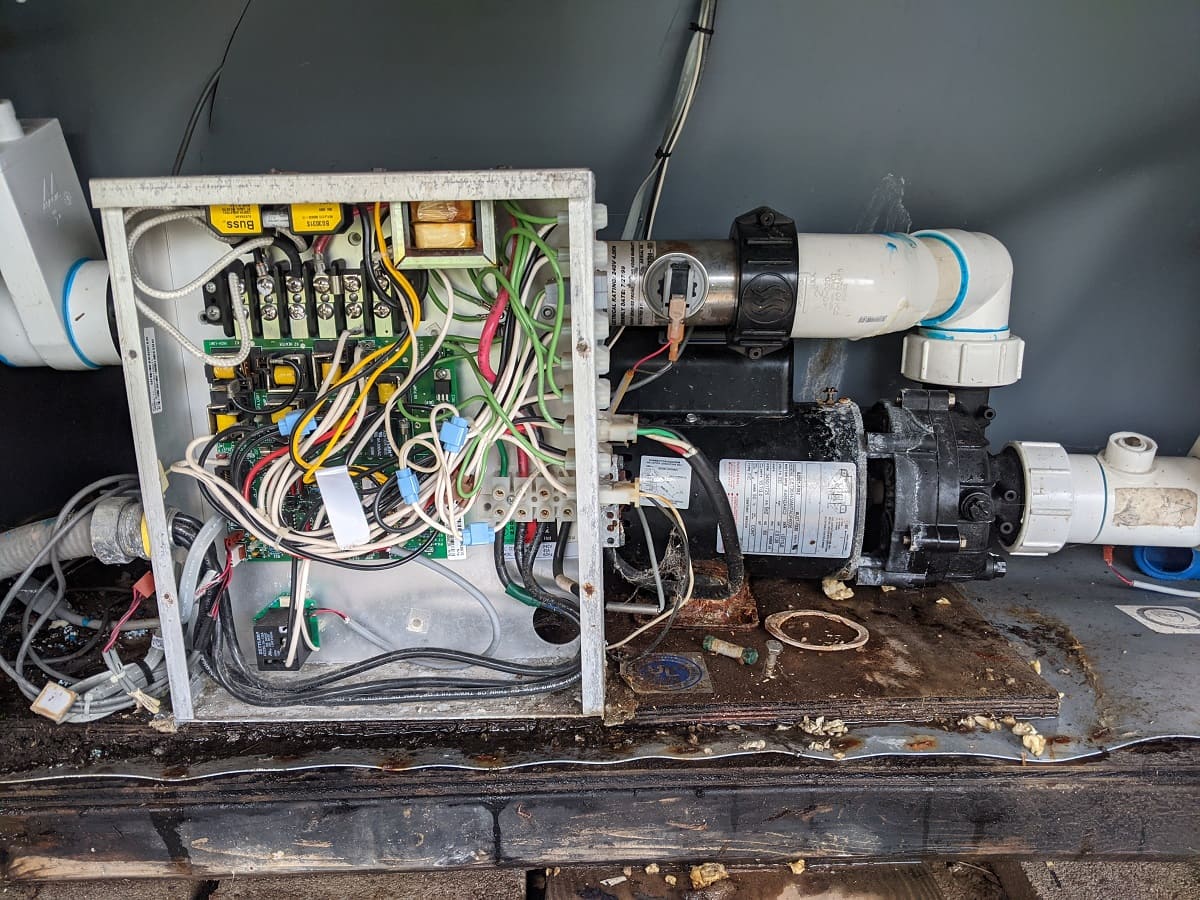
By: Daniel Carter • Articles
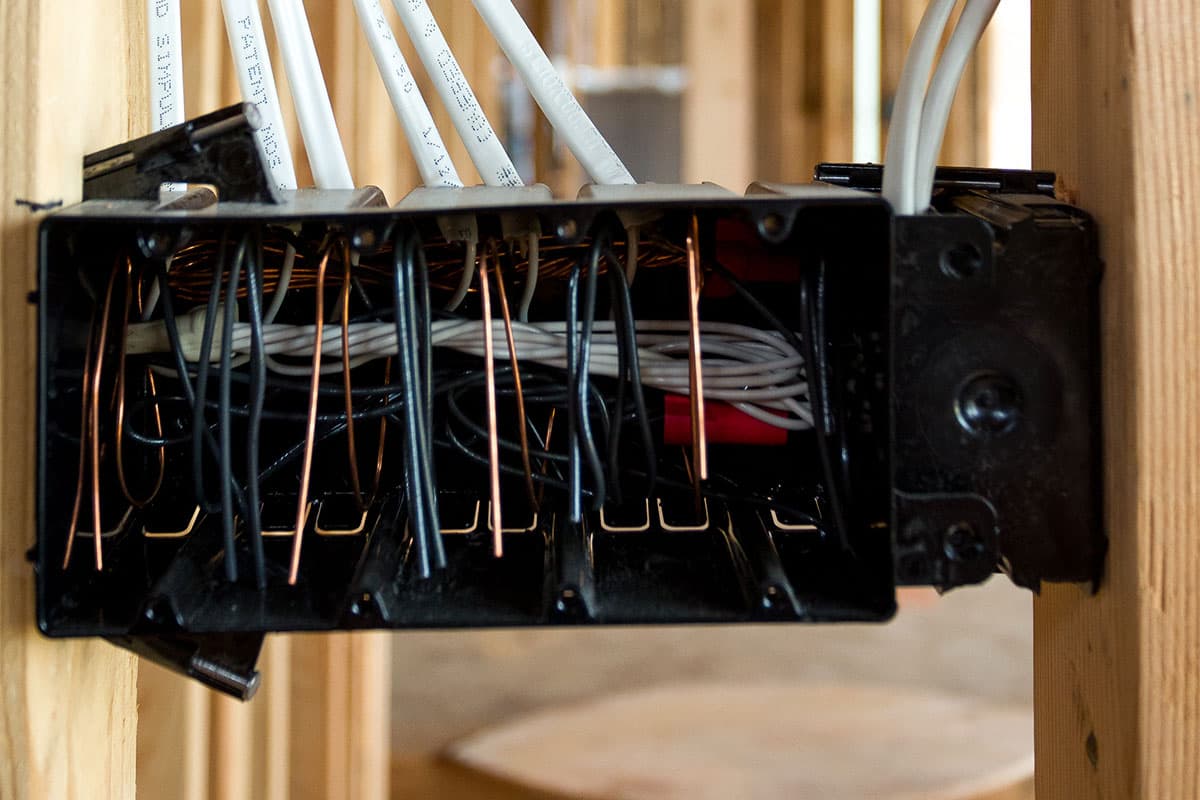
By: Chloe Davis • Articles
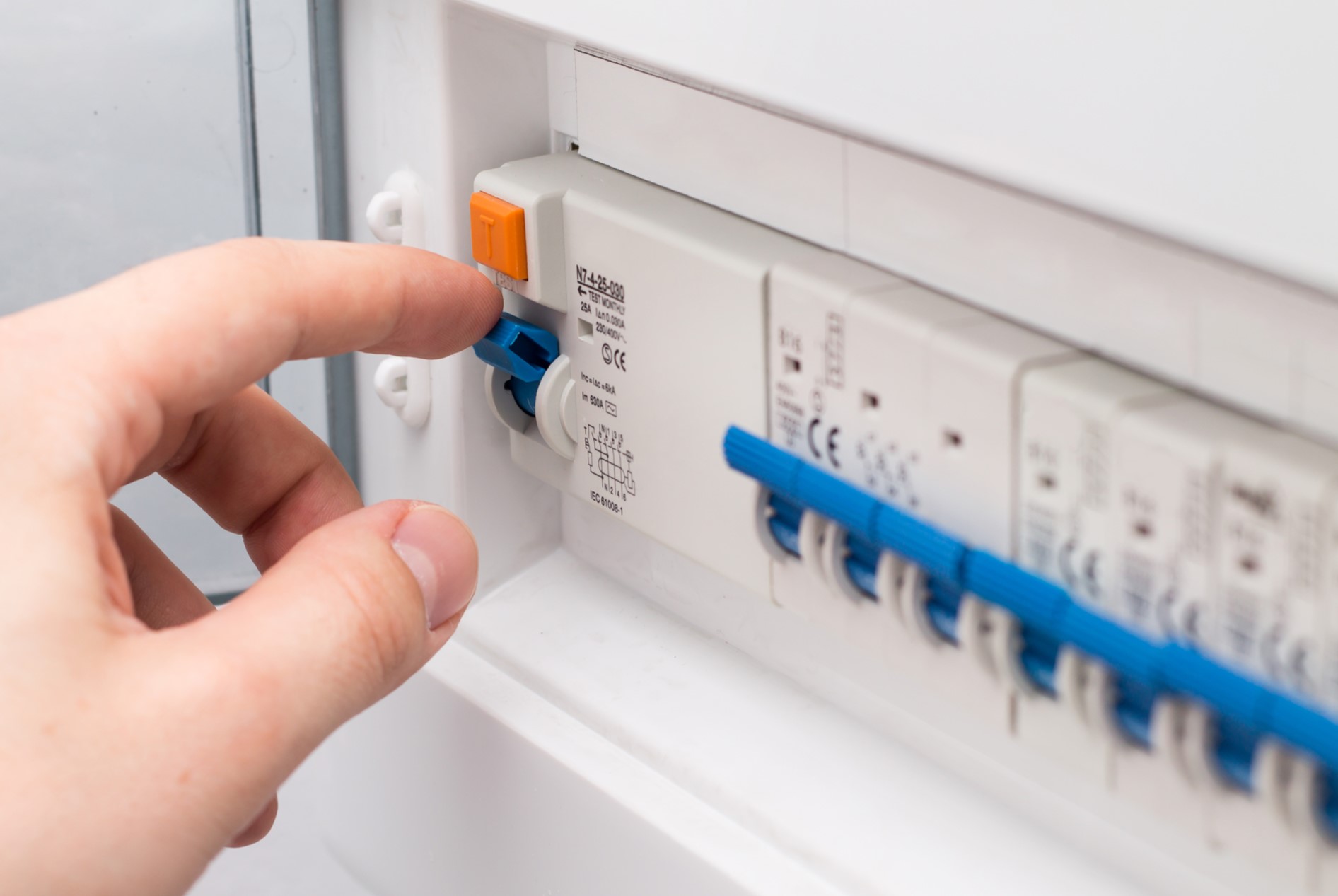
By: Samuel Turner • Articles
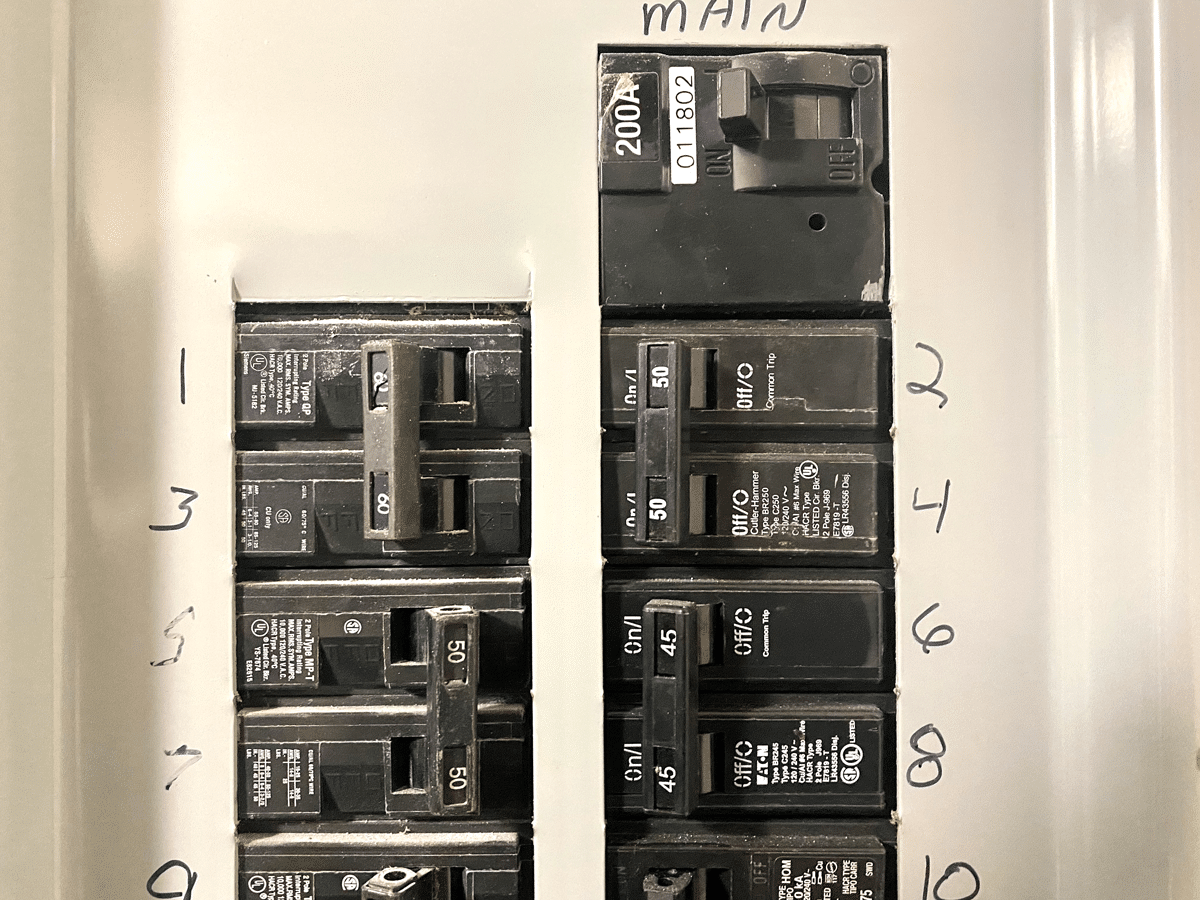
By: Henry Campbell • Articles
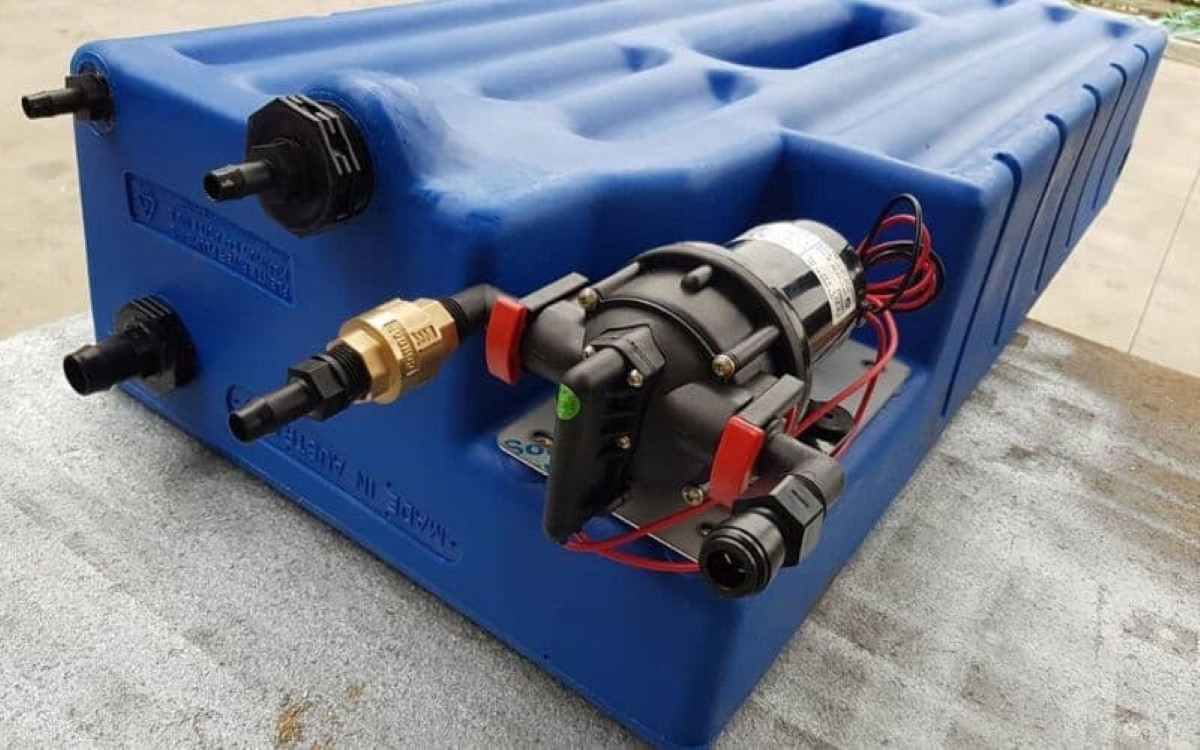
By: Oliver Mitchell • Articles
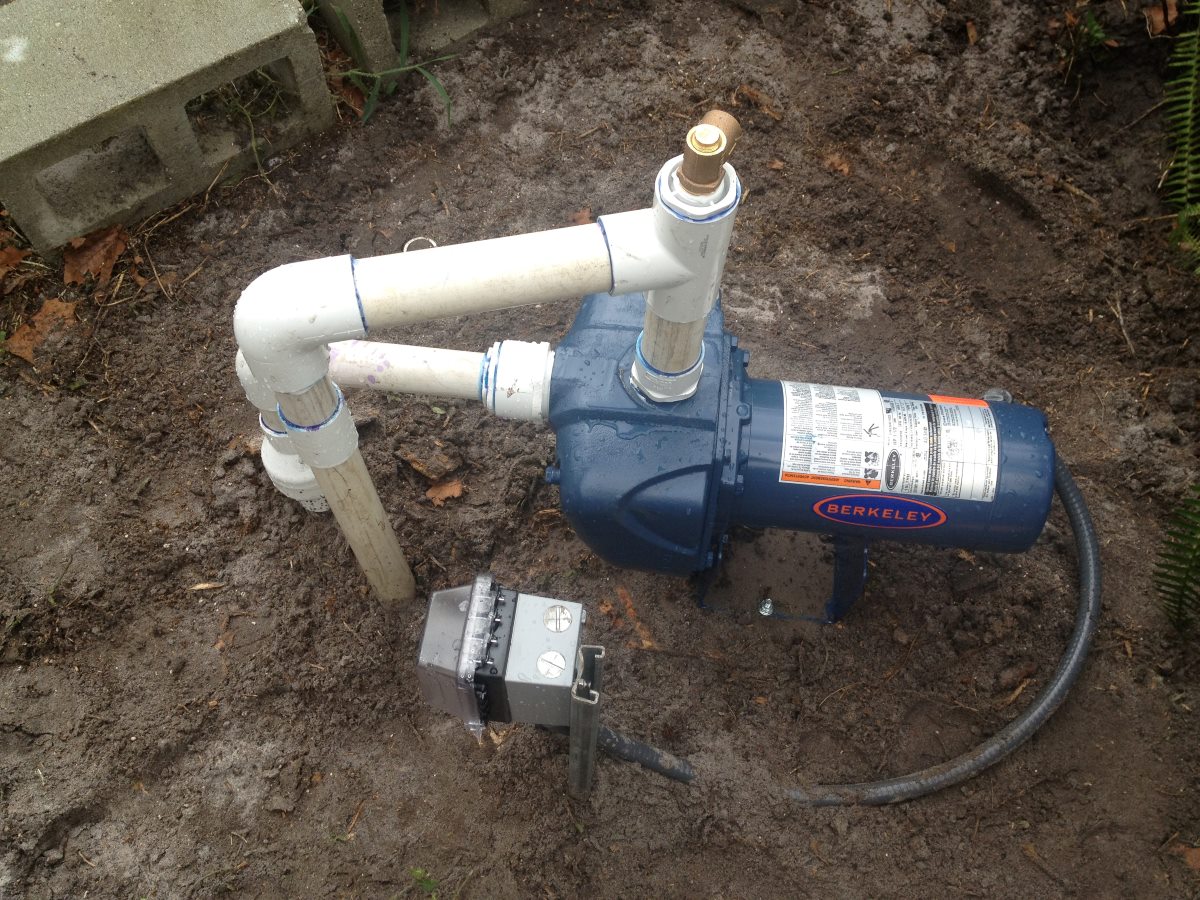
By: Alexander Johnson • Articles
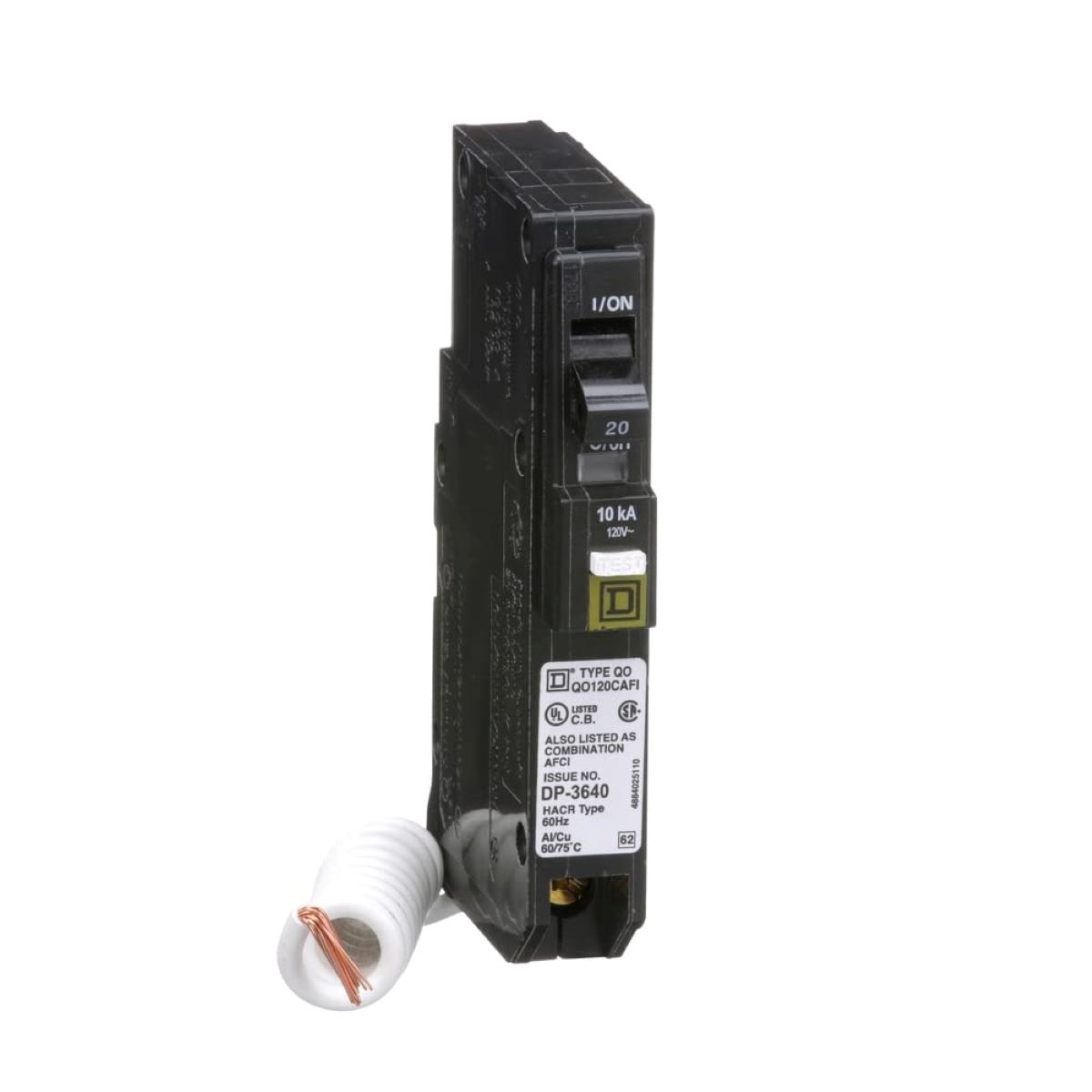
By: Amelia Brooks • Articles
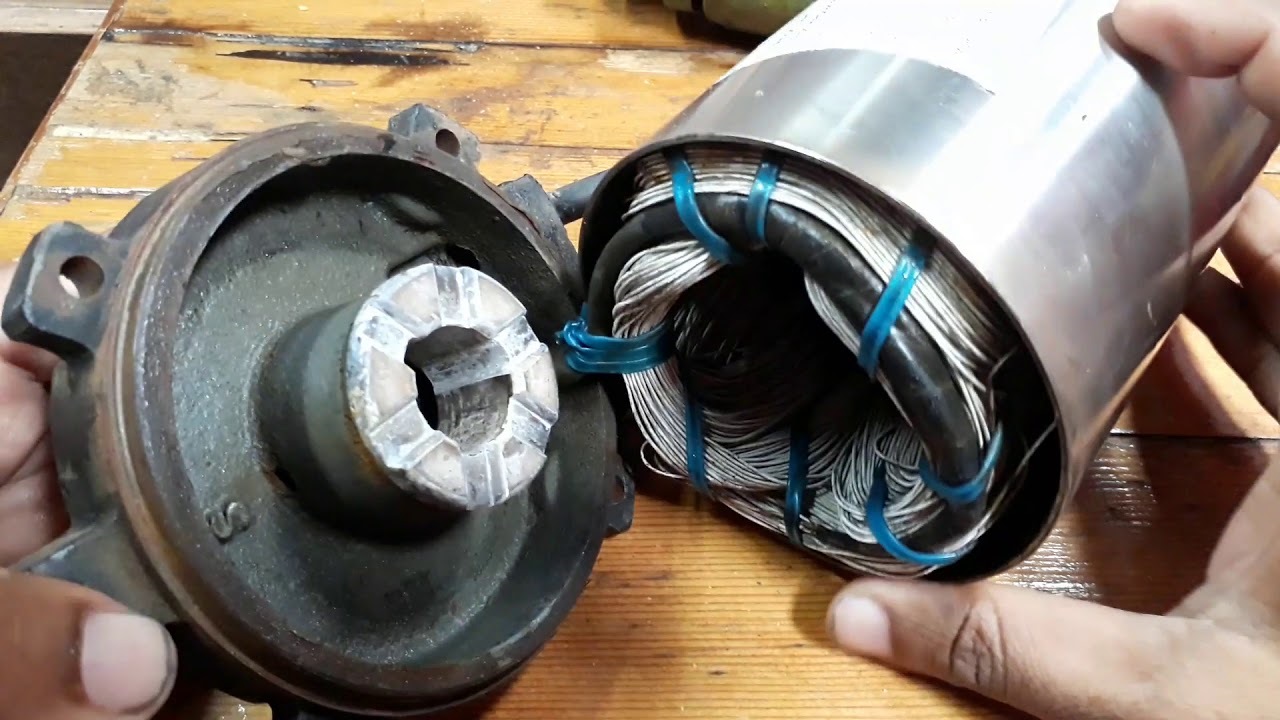
By: Sophia Turner • Articles
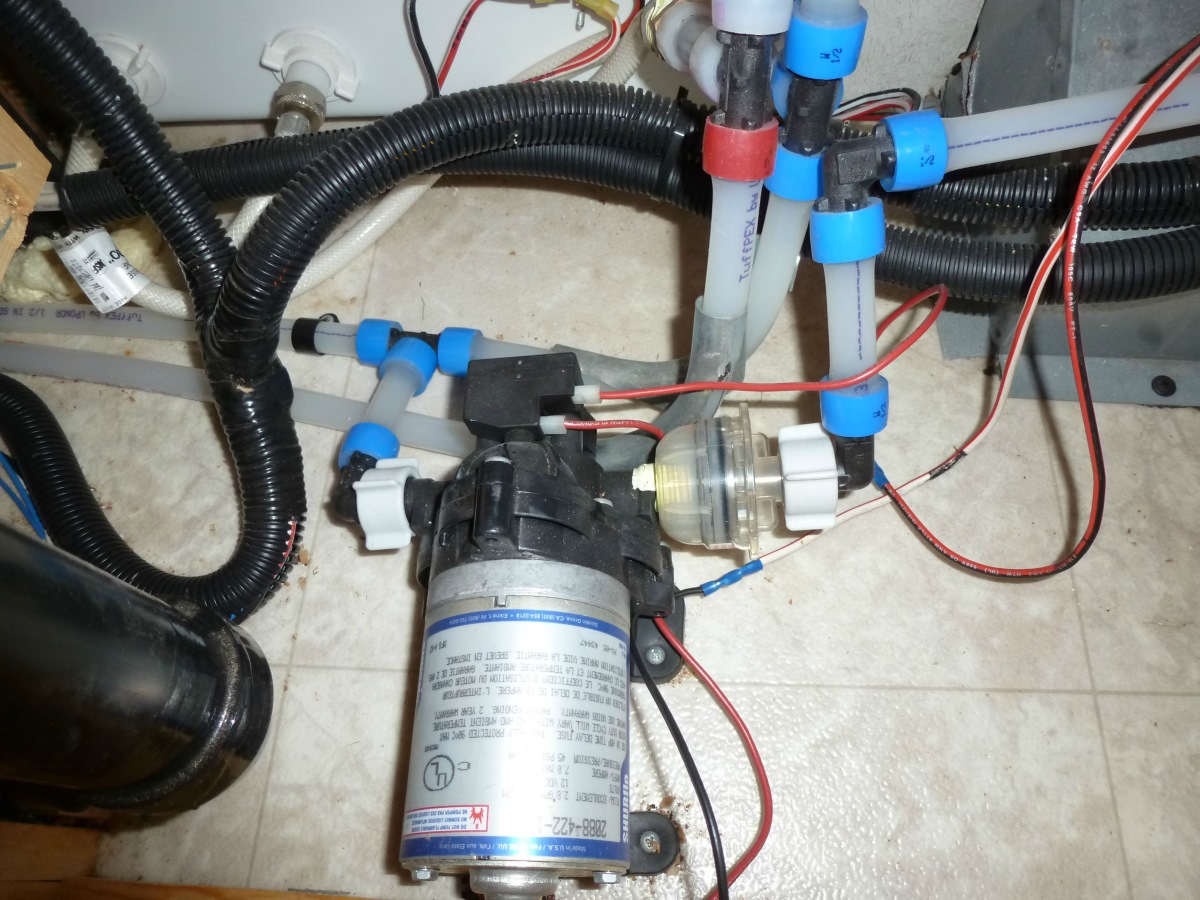
By: Noah Bennett • Articles
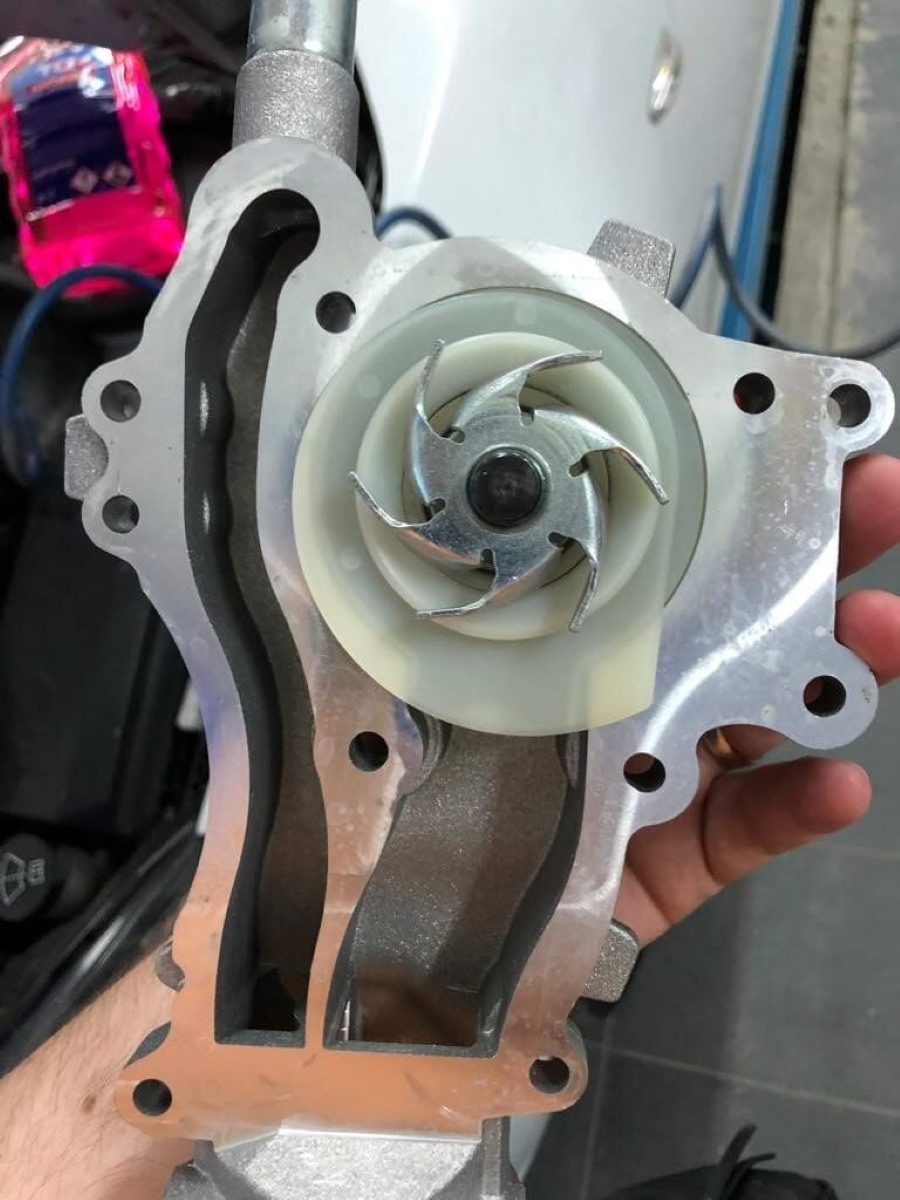
Please accept our Privacy Policy.
STORABLES.COM uses cookies to improve your experience and to show you personalized ads. Please review our privacy policy by clicking here .

- Privacy Overview
- Strictly Necessary Cookies
This website uses cookies so that we can provide you with the best user experience possible. Cookie information is stored in your browser and performs functions such as recognising you when you return to our website and helping our team to understand which sections of the website you find most interesting and useful.
Strictly Necessary Cookie should be enabled at all times so that we can save your preferences for cookie settings.
If you disable this cookie, we will not be able to save your preferences. This means that every time you visit this website you will need to enable or disable cookies again.
- https://storables.com/articles/why-does-my-water-pump-breaker-keep-tripping/

What Size Circuit Breaker for Well Pump: 5 Steps to Calculate
Last Updated on October 3, 2023
Are you ready to dive deep into the world of well pump circuit breakers? If so, get ready to discover the secrets behind calculating the perfect size for your well pump’s circuit breaker.
Calculate the appropriate breaker size based on the pump’s current draw and the National Electrical Code guidelines. For a 1 HP, 230V single-phase submersible well pump, it’s recommended to use a 25 amp 2-pole circuit breaker according to electrical codes.
Understanding why the right size matters and the consequences of using a breaker that’s too small will empower you to make informed decisions. So, grab your tools and let’s explore the fascinating realm of well pump circuit breakers together.
Table of Contents
How Do You Calculate the Size of a Circuit Breaker for a Well Pump?
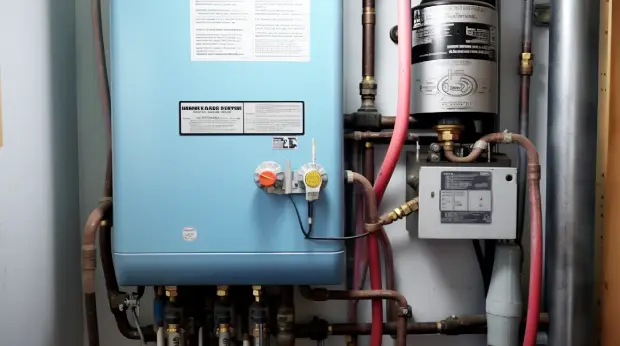
When determining the size of a circuit breaker for a well pump, there are several key steps to follow.
- Step 01: Gather pump information
- Step 02: Calculate breaker size
- Step 03: Choose the nearest standard breaker size
- Step 04: Consider voltage drop
- Step 05: Consult local codes and the electrician
Let’s break down each of these steps in greater detail.
Step 01: Gather Pump Information
First, determine the pump’s horsepower (HP) rating. This information is crucial in calculating the circuit breaker size for your well pump. Here are some steps to guide you:
- Identify the pump’s operating voltage (usually 120V, 230V, or 240V). This will help you select the appropriate circuit breaker.
- Find the pump’s full-load current (FLC) in amps. The FLC can usually be found in the manufacturer’s manual. This value represents the maximum current the pump will draw during normal operation.
Step 02: Calculate Breaker Size
To calculate the appropriate breaker size for your well pump, you’ll need to multiply the pump’s full-load current by 2.5. This accounts for inrush or starting currents that the pump may experience.
The National Electric Code (NEC) provides guidelines for circuit breaker sizing based on the pump’s horsepower. The general formula for sizing the breaker is Breaker Size = FLC x 250%.
FLC stands for full-load current, which is the current that the pump draws when operating at its maximum capacity.
By multiplying the FLC by 2.5 or 250%, you ensure that the breaker can handle the starting current of the pump. This is important because the starting current can be significantly higher than the full-load current.
Step 03: Choose the Nearest Standard Breaker Size
Now, you can select the nearest standard breaker available in your electrical panel for your well pump. Here are the standard breaker sizes to choose from:
- Round up to the nearest standard breaker size: Common standard breaker sizes include 15A, 20A, 30A, 40A, etc. Round up the calculated breaker size to the nearest standard size available in your electrical panel. This ensures compatibility and proper functioning of the well pump.
- Consider the electrical panel’s capacity: Make sure that the chosen standard breaker size does not exceed your electrical panel’s capacity. It is important to maintain a safe and efficient electrical system.
Step 04: Consider Voltage Drop
When choosing the appropriate wire size for your well pump, don’t forget to consider voltage drop.
Voltage drop occurs when the distance between the well pump and the electrical panel is significant. You should take into account this voltage drop because if it is substantial, you may need to choose a larger wire size to compensate.
This compensatory measure will ensure that your well pump receives the necessary amount of voltage to function properly. Additionally, the wire size can also influence your breaker size choice.
Step 05: Consult Local Codes and Electrician
After considering voltage drops, consult local codes and an electrician to ensure that you are making the best choice for your system. You should consult an electrician and local codes to ensure compliance with regulations and receive expert advice.
When determining the size of the circuit breaker for a well pump, here are three key reasons why consulting an electrician and local codes is crucial:
- Safety: An electrician can evaluate the specific needs of your well pump system and recommend a circuit breaker that can handle the load safely, preventing electrical hazards and potential damage.
- Code Compliance: Local electrical codes may have specific requirements for well pump circuit breaker sizing. By consulting local codes, you can ensure that your installation meets the necessary standards and avoids any code violations.
- Efficiency: An electrician can help optimize the efficiency of your well pump system by selecting the right size circuit breaker. This can help minimize energy wastage and reduce operational costs in the long run.
Why Do Well Pumps Need the Right Size Circuit Breaker?
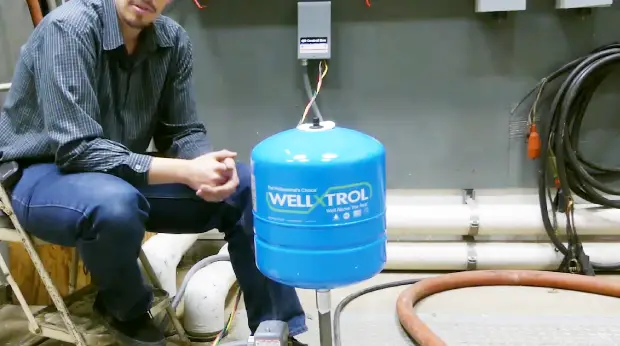
In the case of well pumps, having the right size circuit breaker is crucial for several reasons. Here are some of the most important ones:
- Electrical safety
- Motor protection
- Preventing fires
- Compliance with codes
Let’s take a closer look at each of these aspects.
No 01: Electrical Safety
To ensure electrical safety, ensure your well pump’s circuit breaker is correctly sized. This prevents overcurrents and potential damage to the pump or fire hazards. Here are three reasons why the size of the circuit breaker is important:
- Prevents overloading: A properly sized breaker protects the electrical circuit against overcurrents. If the breaker is too small, it may trip frequently due to overload, disrupting the pump’s operation.
- Protects electrical components: Using the right size breaker helps to prevent damage to the pump and other electrical components. A too-large breaker can cause excessive current flow, leading to damage and reducing the pump’s lifespan.
No 02: Motor Protection
To protect the motor of your well pump, it is crucial to have the right-sized circuit breaker. This is especially important because well pump motors draw higher currents during startup, potentially damaging the motor if not properly protected.
The purpose of the circuit breaker is to accommodate these inrush currents without tripping, ensuring that the motor is safeguarded from frequent starts and stops caused by tripped breakers.
By selecting the correct circuit breaker size for your well pump, you can ensure that the motor is adequately protected and operates smoothly and efficiently.
No 03: Preventing Fires
Ensure you prevent fires by addressing the potential risk of overheating caused by continuous overcurrent conditions. An undersized circuit breaker can result in excessive current flowing through the wires and components, leading to overheating. This overheating can, in turn, cause the insulation on the wires to melt and ignite a fire.
To prevent this dangerous situation, installing the correct size circuit breaker for your well pump is crucial. The size of the circuit breaker should be determined based on the specific requirements of your well pump, considering factors such as the motor’s horsepower and the maximum current it draws.
No 04: Compliance with Codes
To comply with codes, you should consult the National Electric Code (NEC) and follow the recommended safety standards for your electrical installation. When determining the circuit breaker size for your well pump, it is crucial to consider the manufacturer’s specifications and the requirements outlined in the NEC.
Here are three key points to keep in mind:
- Proper sizing: Choosing the right circuit breaker size ensures the well pump operates safely and efficiently.
- NEC guidelines: The NEC provides specific guidelines for selecting circuit breakers based on factors such as horsepower, voltage, and wire size.
- Safety and compliance: Adhering to the NEC requirements ensures your electrical installation is up to code and reduces the risk of electrical hazards.
Can I use a larger breaker to prevent nuisance tripping?
Using a larger breaker won’t necessarily prevent nuisance tripping, as it can compromise safety and lead to overheating or fires. Circuit breakers are designed to protect electrical circuits and equipment from overcurrents.
Nuisance tripping occurs when a circuit breaker trips unnecessarily, often due to temporary power surges or faults. While it may be tempting to install a larger breaker to prevent nuisance tripping, this is not recommended.
What happens if my well pump’s circuit breaker is too small?
If the breaker is too small, it can cause frequent tripping and potential damage to the electrical system. When the well pump draws more current than the breaker can handle, it overloads and trips, cutting off power to the pump. This can lead to disruptions in water supply and potential damage to the pump itself.
To avoid these issues, it is important to ensure that the circuit breaker for the well pump is properly sized.
Can I install a well pump circuit breaker myself?
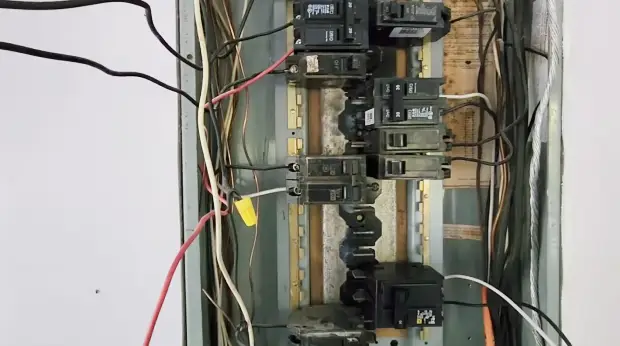
You can install a circuit breaker for your well pump, but it is strongly recommended to consult a licensed electrician for safety and compliance with codes. Installing a well pump circuit breaker involves several steps.
- First, gather the necessary tools and a compatible breaker.
- Turn off the power to the main electrical panel to ensure safety.
- Find an available breaker slot that matches the recommended size in the well pump manual.
- Push the breaker firmly onto the panel’s bus bar.
- Connect the hot wire to the appropriate terminal and the neutral wire to the neutral bus bar.
- Once installed, restore power and test the well pump to ensure it functions correctly.
However, due to the potential hazards and critical nature of electrical work, consulting a licensed electrician is strongly advised for a safe and code-com p liant installation .
Stop Guessing and Choose the Right Circuit Breaker Size for Your Well Pump
Now you know the importance of choosing the right size circuit breaker for your well pump. By calculating the correct amperage and voltage requirements, you can ensure your pump’s safe and efficient operation.
Using a larger breaker may seem like a quick fix, but it can lead to dangerous situations and void warranties. Don’t risk it. Take the time to install the proper circuit breaker for your well pump.
Your pump will thank you with a steady flow of water, and you’ll have peace of mind knowing your system is running smoothly.
About The Author
Related Posts
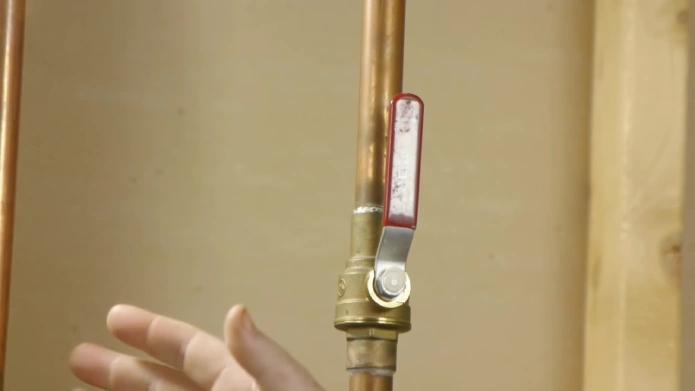
Can You Use a Gas Ball Valve for Water: 3 Situations [Explained]
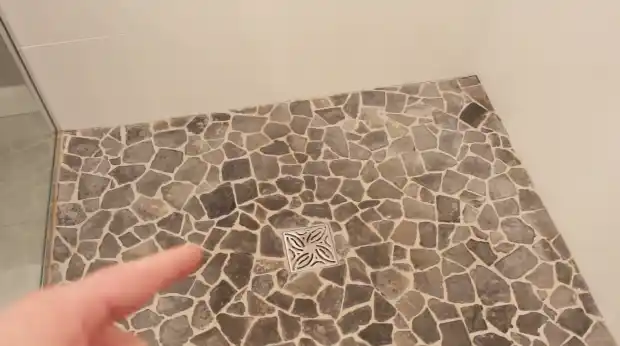
Does a Tankless Water Heater Need a Pressure Relief Valve: 8 Reasons
Leave a comment cancel reply.
Your email address will not be published. Required fields are marked *
Save my name, email, and website in this browser for the next time I comment.
Does Your Well Pump Need a GFCI? The Answer Might Surprise You
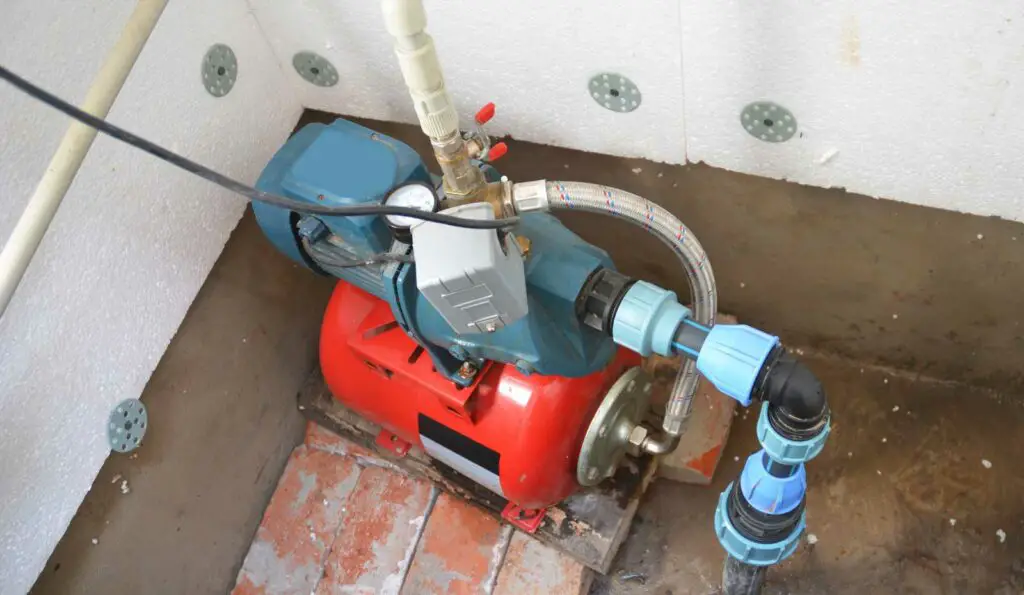
Spread The Word
So, you’ve been wondering if your well pump needs a GFCI breaker . You’re not alone—many homeowners find themselves pondering this question when setting up their water systems. Luckily, we’ve got the scoop just for you.
In a nutshell, the National Electrical Code (NEC) does not require well pumps to have GFCI protection. This is because hard-wired well pumps already provide adequate safety when properly grounded and bonded. But, before you breathe a sigh of relief, there’s more to consider. Some experts suggest that a Ground Fault Protection of Equipment (GFPE) breaker might be a more suitable choice, as it’s specifically designed for this purpose.
Now, let’s dive a little deeper. You see, well pumps draw a significant amount of power, especially during startup. This can cause capacitive leakage to ground in submersible cables, which could lead to false tripping of a standard GFCI breaker, causing annoyance and inconvenience. In my experience, installing a GFPE breaker can help prevent this issue, ultimately ensuring seamless operation of your well pump. So, while GFCI protection may not be mandated by the NEC, it’s still worth considering your options to maintain a safe and efficient water system.
GFCI Basics
Do you know how important GFCI protection is for your home? It may just be the key ingredient to keeping you and your electrical system safe. In this section, we’ll dive into the basics of ground fault circuit interrupters (GFCI) and learn how they can safeguard your well pump. Let’s unravel this electrical enigma together!
Understanding GFCI Protection
GFCI, also known as GFI, stands for ground fault circuit interrupter. It is a life-saving device designed to protect you from electrical hazards, such as electrocution and severe electrical shocks. GFCI works by detecting imbalances in the electrical current flowing through your circuit. When it senses an inconsistency, the GFCI quickly cuts power, preventing potential accidents.
In my experience, installing GFCI protection in areas with water sources, such as kitchens, bathrooms, and well pumps, is crucial. A microwave may also require GFCI protection for added safety and compliance with regulations.
GFCI Outlets vs. Breakers
Now that you understand how GFCI protection works let’s differentiate between GFCI outlets and breakers. GFCI outlets are receptacles with built-in GFCI protection, while GFCI breakers are installed in your electrical panel and guard an entire circuit against ground faults. Installing a GFCI outlet is a DIY-friendly task, but I highly recommend calling a licensed electrician for GFCI breaker installation.
GFCI outlets have two buttons: a “test” and a “reset” button, allowing you to perform regular checks and ensure proper functionality. You may notice a red light on your GFCI outlet – this can either indicate a tripped condition or a wiring problem with the outlet itself.
On the other hand, GFCI breakers protect even hardwired appliances, such as well pumps, from potential electrical hazards. These breakers offer a higher level of protection compared to GFCI outlets, as they guard the entire circuit. In situations where it’s not feasible to install a GFCI outlet for a well pump, a GFCI breaker becomes the go-to choice.
As you can see, GFCI protection plays a significant role in maintaining electrical safety around your home and well pump. Ensure that you have this protection in place, and don’t hesitate to call a professional for assistance if needed. Stay safe out there!
Well Pump GFCI Requirements
Have you ever wondered if your well pump needs GFCI protection? Well, look no further. In this section, we’ll discuss the National Electrical Code (NEC) requirements for well pumps and how to determine if your well pump needs GFCI protection. So let’s dive right in!
National Electrical Code and Well Pumps
The National Electrical Code (NEC) , which has been in existence since 1971, provides guidelines for electrical safety in various settings. When it comes to well pumps, the NEC has specific requirements for GFCI protection. For instance, in certain areas, such as basements or areas that are not intended for habitable rooms, GFCI protection is required for receptacles supplied by single-phase branch circuits rated 150 volts or less to the ground source . However, for well pumps, additional safety measures are needed, which we’ll discuss in the next section.
Determining Well Pump GFCI Needs
It’s important to determine if a well pump requires GFCI protection based on its specific characteristics and installation. Generally speaking, well pumps with long submersible cables may have capacitive leakage to ground, which could cause GFCI trips during normal operation source .
In my experience, it’s wise to consider the use of a GFPE (Ground-Fault Protection of Equipment) breaker for well pumps instead of a GFCI breaker. GFPE breakers are designed to offer protection for equipment, such as well pumps, without tripping as easily as a GFCI breaker might. This helps ensure that your well pump operates safely and efficiently while minimizing the risk of unnecessary GFCI trips and interruptions to your water supply.
When dealing with well pumps, always consult with an experienced electrician or follow the manufacturer’s instructions to make sure you’re meeting the correct GFCI or GFPE requirements. By taking these precautionary steps, you’ll be doing your part to ensure the safety and efficiency of your well pump system.
GFCI in Indoor and Outdoor Areas
Ever wondered if your well pump needs GFCI protection? Don’t worry, I’ve got you covered. In this section, we’ll discuss the indoor and outdoor GFCI requirements to keep you and your electrical system safe.
Indoor GFCI Requirements
GFCI (Ground Fault Circuit Interrupter) is an essential safety feature in modern electrical systems. It helps prevent electrical shock in wet or damp areas by automatically shutting off power when it detects an imbalance in the electrical current. For indoor spaces, GFCI protection is required in several areas, including:
- Crawl spaces : GFCI is necessary in wet or damp crawl spaces where electrical outlets or devices are installed.
- Basements and unfinished basements : Since basements are often damp, GFCI protection is crucial to prevent electrical accidents.
- Kitchens : Due to the presence of water and appliances, GFCI is essential, especially within six feet of sinks.
- Bathrooms : GFCI is required for all receptacles, as water sources and electrical devices can create a hazardous environment.
In my experience, ensuring GFCI protection in these indoor areas is crucial for maintaining electrical safety and preventing accidents.
Outdoor GFCI Requirements
Similar to indoor requirements, outdoor GFCI protection is equally important to prevent electrical hazards. Here are some key areas to consider for outdoor GFCI requirements:
- Garages : GFCI protection is necessary for receptacles in garages, especially near water sources or damp areas.
- Dwellings : All outdoor receptacles in residential properties should have GFCI protection to maintain safety.
- Pool lights : As outdoor lighting fixtures are exposed to water, GFCI protection is crucial to avoid accidents. When it comes to pool lights, you may want to be aware of potential tripping issues and how to solve them.
It’s important to ensure GFCI protection for both indoor and outdoor spaces to maintain electrical safety and prevent accidents. By adhering to these requirements, you can minimize risks and keep your well pump and other electrical devices running smoothly.
Electrical Safety and Grounding
Did you know that proper grounding can save your well pump and your life? Don’t worry, we’ve got you covered in this section. Let’s dive into the importance of proper grounding, wiring, and circuit breaker safety for well pumps.
Importance of Proper Grounding
Grounding your well pump is essential for both safety and performance. In my experience, a grounded well pump prevents electrical shocks and reduces the risk of a fire caused by electrical faults. Moreover, grounding enhances the overall performance of the pump. To avoid accidents and ensure an optimal functioning well pump, always make sure it is properly grounded.
Wiring and Circuit Breaker Safety
When it comes to well pumps, wiring and circuit breaker safety is just as crucial as grounding. First off, ensure that the power supply wires are correctly connected, insulated, and secured. Keeping these wires separated from other electrical systems avoids potential hazards and interference.
Now, let’s talk about the big question: “Does a well pump need a GFCI?” While GFCI protection is not the same as grounding, it plays a vital role in protecting individuals from electrical shock due to ground faults. In general, GFCI protection is highly recommended for well pumps because safety must always come first. However, consult an electrician to determine the best course of action for your specific well pump system.
Circuit breakers are another crucial aspect of any electrical installation. In a well pump system, a properly-sized circuit breaker is crucial for avoiding issues like overheating and short circuits. Ensuring that the well pump is connected to a circuit breaker with the correct amperage rating will keep your system functioning efficiently and safely.
Remember, taking the time to address these critical aspects of electrical safety and grounding will not only protect your well pump investment but also ensure the health and safety of you and your family.
Additional GFCI Applications
Are you aware of the additional applications of GFCI protection beyond well pumps? Hold onto your seat, because we’re about to dive into the world of sump pumps and household appliances. Get ready to discover some crucial information that could make all the difference in protecting your home and electrical devices.
Sump Pumps and GFCIs
As a homeowner, you might have experienced the nightmare of a flooded basement. A sump pump can save the day by pumping water safely away from your home. But did you know it’s essential to have a GFCI-protected receptacle for your sump pump?
Sump pumps, like well pumps, deal with water and require GFCI protection to prevent electrical shock and malfunction. Installing a GFCI receptacle can protect your sump pump from damage and avoid hazard for anyone working near the water source. In my experience, taking a few precautionary steps can go a long way in preventing potential accidents and maintaining the efficiency of your sump pump.
Appliances and GFCIs
Do you know which of your household appliances need GFCI protection? You may be surprised!
Some common appliances that require GFCI protection include:
- Dishwashers
- Refrigerators
- Washing machines
- Kitchen countertop appliances (e.g., toaster ovens, coffee makers)
Providing GFCI protection for these appliances doesn’t just give you peace of mind. It also significantly reduces the risk of electrical shock and potential appliance damage. Present-day building codes mandate the installation of GFCIs for kitchen and laundry room receptacles , making it a must-follow standard for modern homes. This small investment can make a considerable difference when it comes to the safety and well-being of your family.
I found that taking the time to evaluate my home and ensure that all necessary appliances have GFCI protection helped create a safer, more secure environment for me and my loved ones. Trust me, it’s worth it.
Troubleshooting and Maintenance
You’ve invested in a well pump system, but now you’re facing some issues. Don’t worry; we’ve got you covered. In this section, we’ll dive into the crucial aspects of troubleshooting and maintaining your well pump GFCI system. Stick around, and you’ll be able to identify GFCI problems and keep your system running smoothly for the long haul.
Identifying GFCI Problems
When it comes to troubleshooting GFCI problems , the first thing you should look for is if the GFCI outlet isn’t working or if it’s tripping frequently. In my experience, this can be caused by various issues, such as moisture, damaged wiring, or even a faulty well pump. Start by disconnecting the well pump from the GFCI outlet and testing it individually. If the problem persists, you might want to buy a new well pump or call a professional to inspect the wiring and connections.
Remember, safety always comes first. Before performing any troubleshooting tasks, you must turn off the power supply to prevent electric shock. And, when checking the GFCI outlet functionality, make sure it’s in compliance with the well pump circuit requirements.
Maintaining a Well Pump GFCI System
Now that you have identified and resolved the issue, it’s time to keep your well pump GFCI system in top shape . Regular maintenance is essential to ensure the system’s operational efficiency and longevity.
First, check the visible components of your well pump, such as above-ground pumping equipment and motors, for leaks, rust, or other signs of wear. Make sure the motor is adequately cooled and vented. Leave any major repairs to a water well systems professional , as they have the expertise to fix potential problems correctly.
Second, schedule routine inspections and services for your well pump to maintain optimal performance. Be proactive by keeping an eye out for any issues before they become major problems. This is an effective way to spare you the time and money of addressing large-scale repairs or replacements.
Lastly, always use a GFCI breaker to reduce the risk of electrocution. It’s better to be safe than sorry, and the GFCI technology provides added protection for your well pump system and your safety.
By following these troubleshooting and maintenance tips, you’ll not only keep your well pump GFCI system in top shape but also ensure efficient and uninterrupted water supply for your property. Keep up the good work, and your well pump will thank you!
Frequently Asked Questions
You’ve got questions, and we’ve got answers. In this section, we’ll tackle the most common inquiries about well pumps and GFCI protection. Let’s dive in.
Is a GFCI breaker required for a well pump?
No, a GFCI breaker is not required for a well pump. In fact, using a GFCI breaker for a well pump may cause unnecessary trips due to capacitive leakage during normal operation. A better option would be a GFPE breaker , which provides similar protection without unwanted trips.
Why does a well pump trip a GFCI?
Well pumps can trip GFCI breakers because of capacitive leakage. This occurs during normal operation when the long submersible cable creates a slight discharge to ground. So, instead of using a GFCI breaker for a well pump, consider a GFPE breaker as a more suitable option.
Are submersible well pumps required to have GFCI protection?
Despite popular belief, submersible well pumps are not required to have GFCI protection. Although GFCI protection is an essential safety measure for many household devices, it is not mandatory for well pumps due to their unique wiring and grounding requirements.
What size breaker do I need for a well pump?
To determine the appropriate breaker size for your well pump, you’ll need to consider its voltage and horsepower. For example, a 240-volt, 1 horsepower well pump draws 10 amps of current, and may draw up to 35 amps for 5-10 seconds during startup ( source ). Consult your well pump’s manual or a professional electrician for further guidance.
Do sump pumps need to be on a GFCI circuit?
While it may be tempting to plug your sump pump into a GFCI-protected circuit for added safety, the GFCI could accidentally trip, leaving your pump inoperable during a crucial time. To avoid this potential pitfall, it is generally recommended to have your sump pump on a dedicated, non-GFCI circuit.
What are the electrical requirements for well pumps?
Well pumps must be hardwired into your home’s electrical circuits, as they cannot simply be plugged into an electrical outlet like other appliances. Moreover, the pump’s wiring and grounding should be done according to local codes and manufacturer’s guidelines to ensure safety, efficiency, and proper operation. For specific guidance, consult your well pump’s manual or consult a qualified expert.
Want to join others who are creating the most amazing home redesigns & renovations and get more tips, tricks and hacks on how to make your home the best it can be?
Join my brand new free private Facebook group, Remodel Reality to connect with other people like you to make your space the best!
Trending Articles
Dive into more home improvement stories below. One of these trending articles might just be the right solution for your problem or inspire your next project's breakthrough.

What Color Siding Goes with Red Brick: Top 5+ Stunning Combinations to Transform Your Home

How Wide Are Sliding Glass Doors? Unveiling the Perfect Dimensions for Your Home

15 Alternatives to Sliding Glass Doors: Stylish and Functional Choices for Your Home

What is a Japanese Toilet? Unveiling the High-Tech Bathroom Revolution

How Much is a Japanese Toilet? What Makes Them Worth the Price?

4+ Trending Alternatives To Sliding Screen Doors
Leave a Comment Cancel Reply
Your email address will not be published. Required fields are marked *
Save my name, email, and website in this browser for the next time I comment.

Galvin Power is reader-supported. When you buy via our links, we may earn a commission at no cost to you. Learn more
What Size Breaker for a Well Pump? – A Detailed Guide
Written by Edwin Jones / Fact checked by Andrew Wright
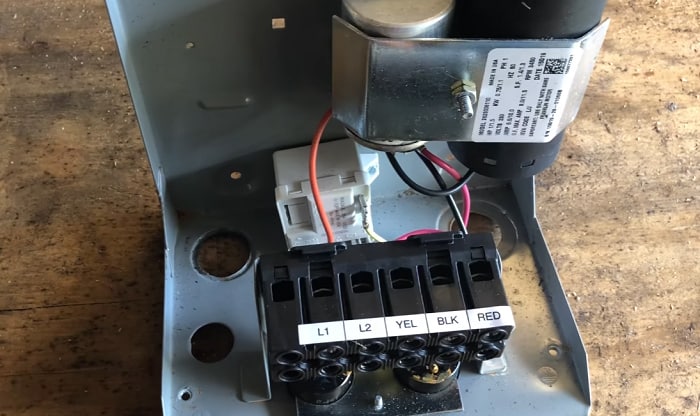
You shouldn’t struggle too much in figuring out what size breaker for a well pump, if its manufacturer provided the specific breaker size recommendations via its manual. Double-check the document first and compare it with Code requirements.
Follow the pump manufacturers’ suggestions over anything else because their own well pump amp draw chart and wire sizing usually account for everything: Code recommendations, distance, possible voltage drop, etc.
Read on for some examples and know the safest steps to take.
Table of Contents
Here’s a Sample Scenario
What if the manufacturer supplies no clear information , how to size a circuit breaker for a pump, why is it important to choose the correct size breaker for a well pump, why it’s ideal to stick to manufacturer requirements .
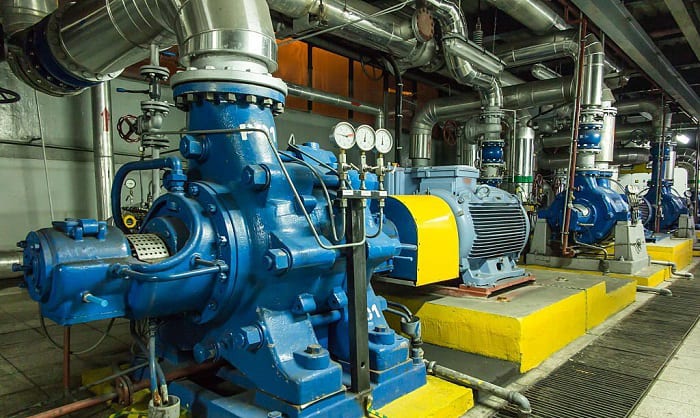
Well pumps, especially submersible pumps, are not your standard motors and often require specialized overload protection. Just ask a lot of well pump installers in your area, and they’ll likely say they consult manuals such as this one created by Franklin.
It provides detailed instructions not only on breaker sizing and wire sizing but also considers distance, temperature, connection type (whether it’s single-phase or three-phase), starting amperage, and voltage drop. Even if we compare these tables to the one recommended by the NEC, you’ll see that they don’t really depart that much and even make it clear that they use its guidelines as a reference.
Let’s assume you use a 1.5 HP pump with a single-phase motor. Based on Table 14 in the Franklin manual and since you’re likely asking about the breaker size for the 230v well pump, you’ll need to use a 30 amp circuit breaker for it, not considering the distance. On the other hand, a 3/4 hp pump with the same motor type and voltage needs a 20 amp breaker.
If you refer to Table 11 of the same manual that gives the maximum length of wire you can use to keep voltage drop under 5%, you’ll either need to use a 14 AWG copper wire or a 12 gauge one if your distance is either 190 or 310 feet, respectively.
Obviously, wire size should always be in sync with breaker size, and the Code usually doesn’t provide detailed breakdowns of these, unlike the tables found in these manuals. This underlines their value and why some installers make a beeline for them instead of NEC tables for motor amperage and wire sizes.
More importantly, it also accounts for the starting amperages of the pumps, which are usually high. For example, a 2 HP 230v single-phase pump may surge between 50 to 60 amps. Even if it lasts for only a few seconds, your breaker will still need to be able to handle that.
If you’re going to limit your references to passages in the Code, it’s still relatively safe, though, as proven by the next section.
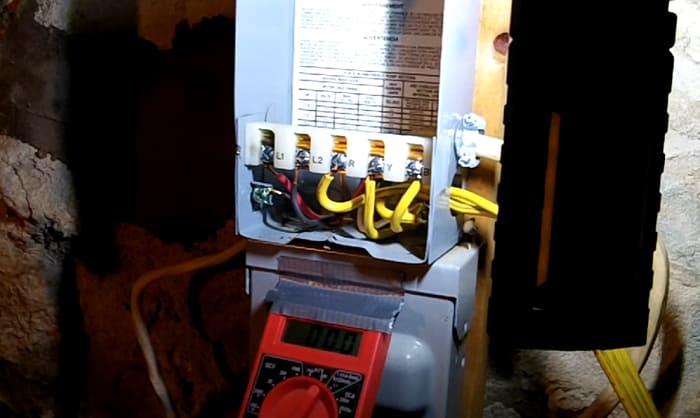
Then always make sure that you size a breaker according to Code. Code rules are safe because they actually recommend the maximum, safest size you can use, meaning you can still settle for a smaller breaker without necessarily veering off the official guidelines.
If you’re not sure that you’re doing it properly, then just consult an inspector. In my experience, they always know how to provide accurate well pump electrical requirements while making sure your setup is perfectly Code-compliant.
Usually, residential well pumps have horsepowers that range between ½ HP to 2 HP. According to Code, for 1 HP well pump that’s 230V and single-phase, you may need to use a 25 amp breaker, for example.
But it’s rarely that simple. Well pump breaker size tends to be more range based on my experience installing well pumps.
These are the most important passages in the Code that are pivotal for determining the correct size circuit breaker with regard to well pump amperage. If you have a copy of the National Electric Code, it’s worth checking them out to see for yourself.
- 6(A)(1) makes it clear that you shouldn’t rely on the nameplate value but on the recommendations given in section 430.248, especially if the pump runs on a common single-phase motor.
- 52(C)(1) states that you should opt for the next breaker size if the total amp’s value does not correspond to the ones stated in section 430.52.
- That same section (430.52) provides a passage that underscores that a basic circuit breaker should not exceed 250% of the values shown in 430.248.
These facts prove that the Code recommends maximum size requirements, instead of minimum. This also proves that slight deviations from recommended values are fine as long as you remain compliant with these specific passages.
Let’s start with this specific example. How many amps does a 3HP 230v single-phase well pump motor have? 17 amps.
Based on the 250% allowance said above, we’ll arrive at the following formula to get the maximum, safest breaker size for that specific pump:
17 x 2.5 = 42.5 amps
Typically, there are no breakers with that specific size. So we go to the next higher standard size, which is 45 amps.
Does that mean that you should limit yourself to that? As most inspectors will say, not really. They’ll likely size a smaller breaker that will still manage to start the pump’s motor.
In this case, if a 30-amp breaker can handle it, then it’s still perfectly code-compliant. The same goes for 35, 40, or 45-amp ones. However, anything beyond that is no longer technically legal.
Take note that these values don’t consider other factors like wire size and distance, like the ones expounded on above.
Submersible well pumps typically have high currents required to start properly. Obviously, your breaker and its corresponding wire conductor should be able to handle that or you risk the possibility of a fire.
Secondly, the pump won’t run optimally and may end up frequently tripping the breaker. Moreover, deep well pumps need to consider longer distances. There are a lot more variables, in short, compared to other gadgets and appliances.
So, again, to know what size breaker for a well pump, don’t depart from the instruction manual as much as possible, especially if the manufacturer already provides detailed information about it. If there are none, make your calculations based on Code rules—all the better if you have time to compare the two and confirm your findings.
If you’re still having doubts, don’t hesitate to ask for technical assistance from the brand you bought the well pump from or a certified inspector or electrician.
- What Size Breaker for 8kw Heat Strip
- Ideal Circuit Breaker Size for 2000 Watt Inverter

I am Andrew Wright. With 8 years of experience designing, installing, and maintaining electrical power systems. I love my job, and I have always wanted to offer others the necessary help so they can take care of their houses.
- Grundfos USA
- The circuit breaker or fuse...
Question: The circuit breaker or fuses on a circulator pump have tripped. What might be the cause?
Circuit breakers and fuses trip for numerous reasons: undervoltage, incorrectly designed circuit breaker or fuses, too low a setting for the motor-protective circuit breaker, asymmetric three-phase current, a short circuit on the motor, incorrect wiring or faulty electrical connections, a worn or blocked pump, a defective capacitor for single-phase motors, a motor-protective circuit breaker exposed to a higher ambient temperature than the motor.
However, the pump may also be undersized for the application in question, and may be operating in excess of its nominal flow rate.
Additional information:
Enhance your knowledge.
Find out how to get reduced energy consumption, increased comfort and unsurpassed operational reliability for your application. Read our customers' stories to learn how they benefit from the Grundfos approach to intelligence, water and energy. You can also search Grundfos research and insights for more learning materials, articles, white papers, videos and much more content to inform your solution.
Grundfos pump solutions overcome customer challenges all over the world.
Research & insights into pump solutions
Dive into the Grundfos knowledge-sharing archive with all the latest research and insights about pump solutions at work.

How to Fix a Breaker That Keeps Tripping
"Ok, where's the flashlight?"
We've all had to deal with tripped circuit breakers . They're annoying and happen at the worst times. As a licensed electrician, I've seen my fair share of breakers, tripped or otherwise.
Circuit breakers monitor the flow of electricity through a circuit. If it exceeds a preset amount, it opens the circuit to stop the current flow. They're a vital piece of your home's electrical system. And when they trip, they're trying to tell you something.
Occasional trips are not something to be alarmed about. But if a circuit breaker in your home keeps tripping, it could be a sign something's wrong.
How To Know if Your Circuit Breaker Is Tripping
If your breaker trips, go to your electrical panel and open the front cover. There should be two columns of circuit breakers and, hopefully, nice labels indicating what circuits each one controls. Most breakers will be on, so look for the one with the handle in a different position than the others.
On every breaker, there will be an "On" and "Off" position. On a tripped breaker, the handle will be in the middle, neither On nor Off. To reset, flip the handle to Off first, then to On. Stand to the side of the panel and turn your face away when flipping breakers. If an arc flash occurs, it may save your life.
Why Does My Circuit Breaker Keep Tripping?
Circuit breakers trip when too much electricity flows through the breaker. Circuit breakers are rated based on how much electricity can safely flow through the electrical circuit they're protecting. When that's exceeded, the breakers trip. A 20-amp breaker trips when more than 20 amps of current is on the circuit.
Circuit breakers trip for three main reasons:
- Short circuits;
- Ground faults.
What Is a Circuit Overload?
An overloaded circuit has too many things running on it at once.
Imagine a kitchen with a microwave and an air fryer next to each other. Kitchen small appliance circuits are 20 amps. A 1,200-watt microwave draws 10 amps. A 1,700-watt air fryer draws about 14 amps. Running both appliances at the same time puts 24 amps on a circuit designed for 20 amps.
Over time, those extra amps will damage the wires by generating excessive heat. A circuit breaker stops this overload condition by opening the circuit.
What Is a Short Circuit?
A short circuit happens when a hot wire comes in contact with another hot wire, or the neutral or ground. When a circuit operates normally, current flows on the hot wire from your electrical panel to a light, appliance or other load. Then it goes back to the panel via the neutral.
If the hot and neutral accidentally touch each other, the current takes a "shortcut" back to the panel instead of going to the load. The electricity generated by this contact is many times higher than if it was being used by a light or appliance. It's an extremely dangerous situation that can cause shocks and fires.
What Is a Ground Fault?
A ground fault is a type of short circuit. Ground faults happen when a hot wire touches a non-current carrying part of the electrical circuit, like a metal box or pipe. It's important for that unintentional, really high current to have a place to go, so non-current-carrying parts of your home's electrical system are bonded together and connected to a ground.
If there's no purposeful path to channel that ground fault current safely, it will go through anything available, including you. Ground-fault circuit interrupters (GFCI) are specifically designed to monitor for ground faults, but regular circuit breakers also provide protection.
How To Fix a Circuit Breaker That Keeps Tripping
If your breaker keeps tripping, investigate and fix the problem. Here are a few ways to narrow down the possibilities. Always call a licensed electrician if the issue becomes too involved.
Check for overload
Figure out which area of the house the tripped breaker controls, then turn off and unplug everything in that area. Lights, microwaves, computers, everything. Then go turn on the breaker. If the breaker trips immediately, even with nothing plugged in, it's likely you have a short, not an overload.
If the breaker holds, go back to the room and start plugging things in and turning them on one by one. After each item, pause, then do the next one. When the breaker trips again, you know you've reached your limit for that circuit. Redistribute the loads more evenly between circuits if possible.
Check for a short in a specific appliance
Shorts and ground faults can occur within an appliance or other electrical device when a hot wire touches the housing.
Note the last thing you plugged in when the breaker tripped while checking for an overload. If you plug that appliance or device into another circuit, does that circuit trip as well? If so, unplug the device immediately and don't use it until it's replaced or serviced.
Call an electrician for shorts and ground faults in the wiring
If the breaker trips immediately upon resetting, even with nothing plugged in or turned on, it's likely something in your home's wiring causing the problem. This could be a loose connection at a receptacle or other device, or something more complicated, like worn insulation within your walls.
If you have electrical experience and can determine which device is causing the short, replace the device or correct the loose wire. If you're not experienced, or you smell something burning or see scorch marks on your walls, call a professional licensed electrician. Do the same if you have repeated problems with flickering lights or tripping breakers.
Electrical fires and shocks are dangerous, and shorts and ground faults are difficult to find. A pro can diagnose and fix the issue, providing peace of mind.
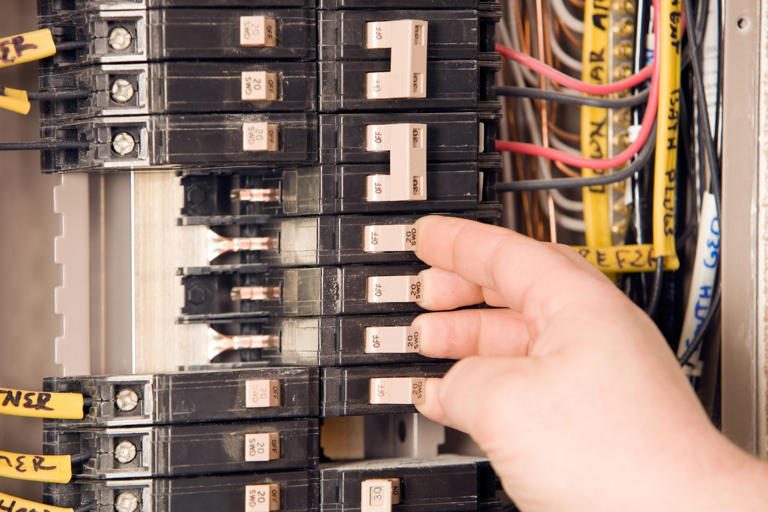

IMAGES
VIDEO
COMMENTS
Well Pump Motor. If your pump continues to trip your circuit breaker immediately after each time you flip it on, it is likely there is something wrong with the pump's motor. However, the problem may be the wiring leading to the pump itself. A professional will be able to tell you if it is the wiring or if you need a new motor.
Check for Overheating. Other heat sources or direct sunlight can cause the overloads to overheat and prevent the pump from operating. Shade the control panel, provide ventilation or move the box away from the heat source. Check the Control Panel. Give the control panel a visual exam for obvious signs of defects and wear.
2 Video of Well Pump Tripping Breaker; 3 How To Diagnose The Well Pump When It Keeps Tripping Breaker. 3.1 Inspect The Pressure Switch; 3.2 Disconnect The Motor; 3.3 Inspect The Pump Motor; 3.4 Fix The Blockages; 3.5 Check The Pipes, Pump Boxes, Bearings, And Shafts; 4 Tips To Follow While Working With The Well Pump Tripping Breaker Issue; 5 FAQs
Overloaded Circuit. This is one of the leading causes your submersible water pump will trip your breaker. Overloading is a phenomenon that happens when more energy than the circuit can handle passes through the device. The breaker prevents an overload of amperage from harming your pump or anything connected to it.
Then check the well's double-pole circuit breaker to see that it hasn't tripped. If it has, reset it. A breaker that keeps tripping likely means a problem with the well pump, and you'll need to call a pro for that. Family Handyman. Step 2. Then Check the Pressure Switch. ... it won't start the well pump and you won't have water, so ...
When a water or well pump keeps tripping the circuit breaker, most-likely there is a failing pump motor drawing high current, perhaps from a bad bearing, or perhaps from having run the pump dry. Also see the electric motor diagnostics. at ELECTRIC MOTOR DIAGNOSTIC GUIDE. On 2021-10-28 by Uche.
Well pump wiring diagnosis & repair: This article describes troubleshooting a submersible well pump that was causing tripped circuit breakers and that pumped water only at a slow, reduced rate and pressure, and includes well pump wiring diagrams and instructions. Ultimately using some simple electrical tests the homeowner traced the water pump ...
Check out My Other Well / Pump Related Videos on my channel. Find the (Well Q&A) Playlist! My Videos can save you Thousands of dollars and give you professi...
On 2020-11-12 by (mod) - pump is tripping the circuit breaker th. June If your pump is tripping the circuit breaker the usual causes are a failing pump motor or possibly damaged electrical wiring. On 2020-11-12 by june . our sumersable pump starts but a few minutes it trips. On 2020-10-28 - by (mod) - cause of repeated breaker tripping for your ...
For instance, if your well pump shares a circuit with other high-powered appliances, the combined energy requirement may exceed the circuit's capacity, causing the breaker to trip as a safety measure. ... Proper grounding of electrical components is crucial for preventing future tripping. Well Pump Breaker Keeps Tripping: Call Today.
New well pump tripping breaker. A new well pump can cause issues with our circuit breaker the same way an old one can. However, the issues with the pump may stem from more than just our standard array of wear and tear or problematic parts. The new pump can suffer from an issue all on its own.
This short video explains how you can tell is your pump is shorted out or if its the wire in the ground going to the well from the tank.Links to Common Water...
1. Overloading the Circuit. One common reason why a well pump may trip the breaker is that the circuit is being overloaded. This can happen if the well pump is drawing too much power, causing the breaker to shut off in order to prevent the wiring from overheating and potentially causing a fire. This can be caused by a malfunction in the well ...
Aug 5, 2014. #10. If the pump is running continuously when the breaker trips, it is most likely a motor or wire problem. If the pump is cycling on and off every few seconds or minutes while you are using water for extended periods of time, the cycling has probably already damaged the motor.
Failed Seals. The next reason your pump could be tripping its breaker lies in failed mechanical seals. If the seals are perished or loose, then water can make its way into the pump windings. This will cause the breaker to trip until the seal is fixed. You may also find that a worn bearing could be the problem.
If the motor is overheating or seizing, it can cause the breaker to trip. In such cases, it may be necessary to service or replace the motor. Step 4: Monitor voltage and power supply: Keep an eye on the voltage and power supply to the water pump. Fluctuations in voltage or low power supply can lead to breaker tripping.
The bearings were going out). Smooth sound, no more burnt switches, water pressure is fine (the switch is a 40/60). Before that, there were no problem with it tripping a breaker, it was in a bad shape, but it worked (even if, as previously mentioned, it was burning through switches.) Now, we noticed it tripping a breaker in the evening only (so ...
Step 01: Gather pump information. Step 02: Calculate breaker size. Step 03: Choose the nearest standard breaker size. Step 04: Consider voltage drop. Step 05: Consult local codes and the electrician. Let's break down each of these steps in greater detail.
The AFCI-only breaker does not trip. Again, this is consistent with the ground-fault detection being the problem. The one electrical appliance that seems consistently associated with the tripping is the well pump (submersible, 1 HP, Subdrive controller). When a breaker trips, it seems that it only happens when the water is running.
No, a GFCI breaker is not required for a well pump. In fact, using a GFCI breaker for a well pump may cause unnecessary trips due to capacitive leakage during normal operation. A better option would be a GFPE breaker, which provides similar protection without unwanted trips.
Based on Table 14 in the Franklin manual and since you're likely asking about the breaker size for the 230v well pump, you'll need to use a 30 amp circuit breaker for it, not considering the distance. On the other hand, a 3/4 hp pump with the same motor type and voltage needs a 20 amp breaker. If you refer to Table 11 of the same manual ...
Answer: Circuit breakers and fuses trip for numerous reasons: undervoltage, incorrectly designed circuit breaker or fuses, too low a setting for the motor-protective circuit breaker, asymmetric three-phase current, a short circuit on the motor, incorrect wiring or faulty electrical connections, a worn or blocked pump, a defective capacitor for ...
Generally, a 1 HP pump would need a circuit breaker rated for 15 A, a 2 HP one would need a 25 A one, and a 3 HP one would need 35 A. However, the next higher one may be necessary if the initial current surge is expected to be very high to prevent frequent tripping. In short, the right size breaker is neither too low that it would often trip or ...
Circuit breakers are rated based on how much electricity can safely flow through the electrical circuit they're protecting. When that's exceeded, the breakers trip. A 20-amp breaker trips when ...